Agri Business
- Agri Insurance
Agriculture
Aquaculture
- Farm Machinery
- Feed Management
- Horticulture
Livestock Farming
- Modern Farming
Organic Farming
- Pests and Diseases
- Plant Nutrition
- Poultry Farming
Project Reports
- Schemes/Subsidies/Loans
- Success Stories
- Agriculture News

Cattle Farming in the Philippines: Requirements, Business Plan, and Management
Cattle farming in the Philippines has been essential to the country’s agricultural industry for centuries. The sector contributes significantly to the nation’s food security, livelihood, and rural development. Below we learn about cattle farming business plan in the Philippines, the profitability of cattle farming in the Philippines, how to start cattle farming in the Philippines, and about different breeds and challenges faced in the Philippines.
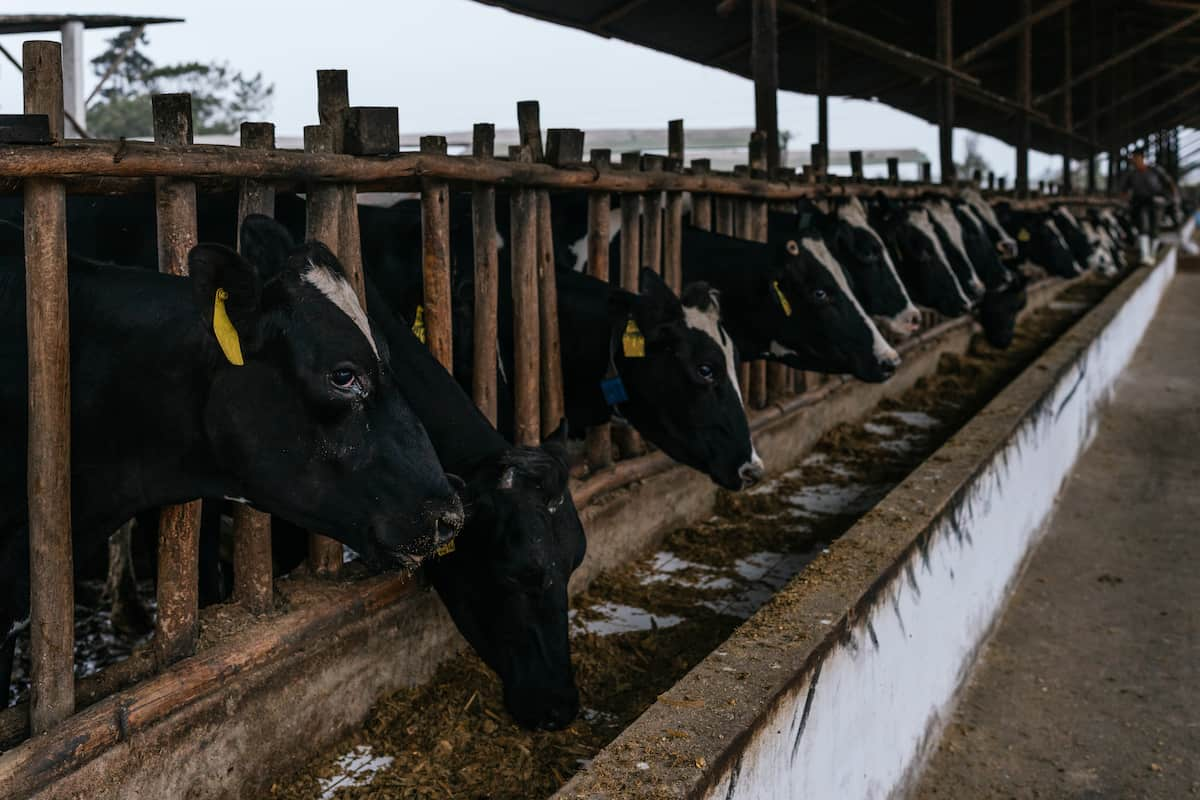
Cattle Farming in the Philippines
Historical background of cattle farming in the philippines.
Cattle were first introduced to the Philippines by the Spanish colonizers in the 16th century. Native breeds, such as the Philippine Native Cattle, were crossed with Spanish cattle breeds like the Andalusian and the Retinta. Over time, the cattle industry in the Philippines evolved to adapt to local conditions and serve the growing population’s needs.
Breeds of Cattle in the Philippines
- Native cattle (Bos taurus) are small-sized, hardy, and well-adapted to local conditions. They are primarily used for draught purposes, meat, and as a source of income for smallholder farmers.
- Dairy cattle (Bos taurus) are bred for milk production and include breeds such as Holstein, Jersey, and Sahiwal. The Philippine Carabao Center has also developed a crossbreed called the Philippine Dairy Buffalo, a cross between Murrah Buffalo and the Philippine Native Buffalo.
- Beef cattle (Bos indicus and Bos taurus) are bred for meat production and include breeds like Angus, Hereford, and Brahman. Crossbreeding with native cattle has produced hybrids like the Philippine Native x Brahman, which are well-adapted to local conditions and have good meat quality.
Cattle Management Practices
- Feeding and nutrition – The primary feed source for cattle in the Philippines is pasture grasses and forages. During the dry season, when pasture is scarce, farmers supplement their animals’ diets with rice straw, corn stover, and agricultural by-products. Concentrates such as corn, rice bran, and copra meal may also be fed to improve the animals’ nutritional intake.
- Breeding and reproduction – Artificial insemination (AI) and natural mating are the two primary methods of breeding cattle in the Philippines. AI is more prevalent in dairy cattle operations, while natural mating is more common in small-scale beef and native cattle farms.
- Health management – Vaccination, deworming, and tick control are essential to cattle health management in the Philippines. Farmers must also ensure proper sanitation and clean water sources to prevent the spread of diseases.
- Housing and infrastructure – Cattle housing in the Philippines varies depending on the scale and purpose of the farm. Small-scale operations often use simple, open-sided sheds, while larger-scale farms may have more sophisticated facilities with concrete flooring and proper drainage.
Challenges Faced by Cattle Farmers in the Philippines
- Limited access to quality breeding stock – The lack of quality breeding stock has resulted in the slow genetic improvement of cattle in the Philippines.
- Poor nutrition and feed management – Limited access to quality feeds and poor feeding practices can lead to poor animal health, reduced growth rates, and decreased productivity.
- Inadequate veterinary services – Many rural areas in the Philippines need more access to veterinary services, which can lead to disease outbreaks and reduced herd productivity.
- Climate change – The Philippines is prone to natural disasters like typhoons, droughts, and floods, which can devastate cattle farms and disrupt the supply chain.
In case you missed it: How to Start Dairy Cow Farming in 10 Steps: Business Plan, Management, and Care
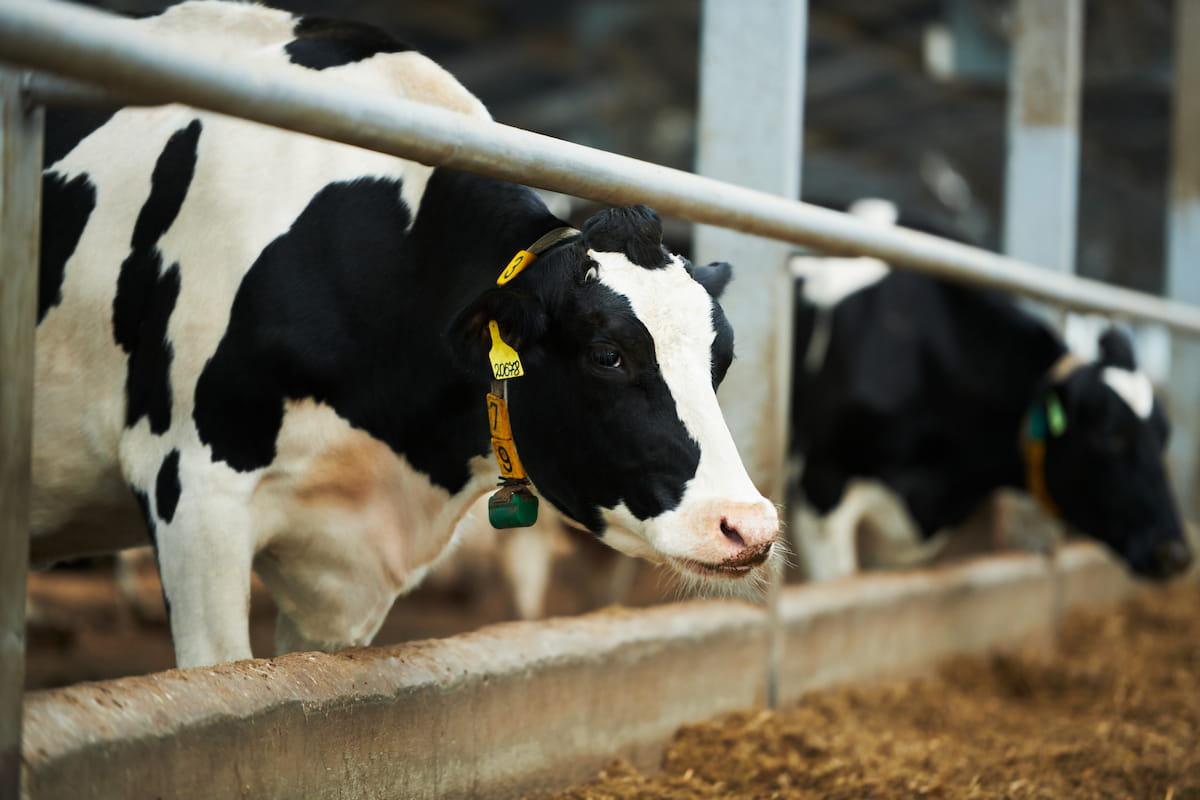
Potential for Growth and Sustainability in the Cattle Farming Industry
- Improved breeding programs – The implementation of better breeding programs and the introduction of superior genetic stock can lead to significant improvements in productivity and meat quality. The government and private sector can collaborate to establish nucleus breeding farms, which will serve as sources of quality breeding animals.
- Enhanced extension services – Providing cattle farmers with access to training, technical assistance, and support in areas such as animal health, nutrition, and breeding can improve the overall productivity and sustainability of the industry.
- Adoption of sustainable farming practices – Encouragement of sustainable and climate-resilient farming methods, such as rotational grazing, combined crop-livestock systems, and silvopasture, may help reduce climate change and boost industrial stability.
- Diversification and value addition – Encouraging the development of value-added products, such as processed meat products and dairy items, can help diversify the industry and increase its competitiveness in the market.
Role of Government and Private Sector Initiatives
- Government support – The Philippine government has introduced various programs and initiatives to support the cattle farming industry, such as the National Livestock Program, which aims to increase livestock production and improve food security. The Philippine Carabao Center, for instance, is actively engaged in research, development, and extension services related to dairy buffalo production.
- Private sector involvement – The private sector plays a crucial role in the growth of the cattle farming industry in the Philippines. Private companies are involved in various aspects of the industry, including breeding, feed production, processing, and marketing.
- Collaboration and partnerships – Public-private partnerships can help drive the development and growth of the cattle farming industry in the Philippines. These collaborations can facilitate sharing of resources, knowledge, and technology, resulting in more efficient and sustainable farming practices.
Profitability of Cattle Farming in the Philippines
Various factors, including the efficiency of farm management, the quality of breeding stock, and the prevailing market conditions, influence the profitability of cattle farming in the Philippines. With the country’s growing population and increasing demand for meat and dairy products, the potential for profitability in the sector remains high. In recent years, the government has actively promoted cattle farming through various programs and initiatives to enhance production, boost farm incomes, and improve overall profitability.
However, cattle farmers must adopt sustainable and efficient farming practices to maximize profitability. These include optimizing feed management, investing in quality breeding stock, and ensuring access to veterinary services. Additionally, cattle farmers can diversify their operations by venturing into value-added products, such as processed meat and dairy items.
In case you missed it: How to Start Gir Cow Farming in 10 Steps: Business Plan, Management, and Care
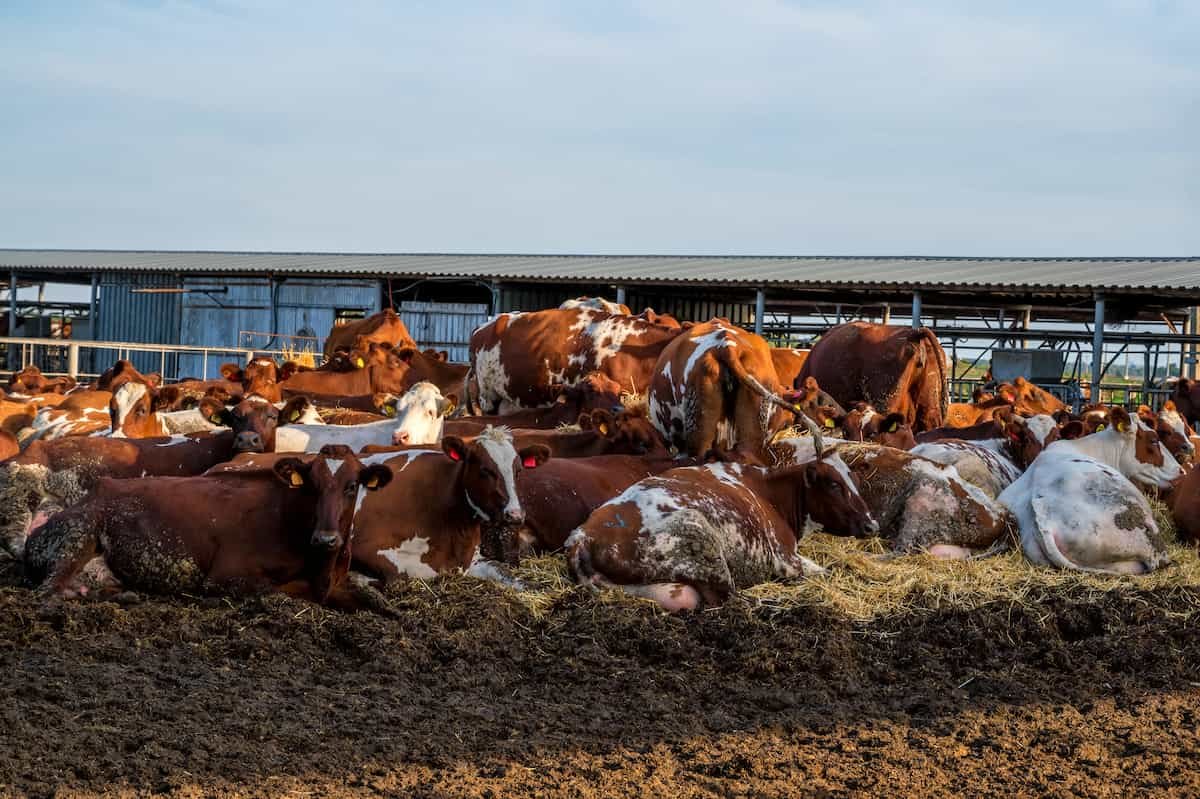
Cattle farming in the Philippines has significant potential for growth and sustainability. By addressing the challenges faced by the industry, such as limited access to quality breeding stock, poor nutrition and feed management, inadequate veterinary services, and the effects of climate change, the sector can continue to contribute to the nation’s food security and rural development.
- Feed Your Flock for Less: Top 10 Tips to Save on Chicken Feed
- Ultimate Guide to Ossabaw Island Hog: Breeding, Raising, Diet, and Care
- Hatching Answers: The Top 10 Reasons Your Chickens Aren’t Laying Eggs
- Eggs and Economics: Breaking Down the Cost of Raising Backyard Chickens
- Defend Your Greens: Proven Methods to Keep Iguanas Out of Your Garden
- Ultimate Guide to Cinnamon Queen Chicken: A Comprehensive Guide for Beginners
- Ultimate Guide to California Tan Chicken: Breeding, Raising, Diet, Egg-Production and Care
- Ultimate Guide to Marsh Daisy Chicken: Breeding, Raising, Diet, and Care
- 10 Types of Chicken Farming Businesses You Can Start for Profits
- Related Topics
- Dairy Farming
Leave a Reply Cancel reply
Save my name and email in this browser for the next time I comment.
Different Varieties of Asparagus and Their Growing Conditions
From water lilies to cardinal flowers: top 10 best aquatic flowers to..., plant spacing chart for vegetables, fruits, flowers, and herbs, a step-by-step guide to raising ducklings: instructions for feeding and care, ultimate guide to sebright chicken breed: characteristics, feed, and care, ultimate guide to padovana chicken breed: characteristics, feed, and care, how to increase flowers in blackberries: explained in 10 simple steps for..., how to protect your garden from frost: preparation for vegetables, fruits, flowers,..., chicken coop deep littering: how to use it and benefits, the pros and cons of organic fertilizers: a beginners guide, frequently asked questions about vermicompost, 1 acre maize/corn cultivation project report in india: production cost and profit, how to grow grape tomatoes: a guide for planting, care, and harvest, how to compost dry leaves in a bin or pile: best way..., avocado seed growing stages: avocado seed growth time lapse, best container plants for montana: for vegetables, flowers, herbs in winter, shade,..., how to grow sweet corn in your home garden: pots, backyard, and..., moldova pig farming business plan: solid strategies for high profits, when to prune pittosporum: best time to trim japanese cheesewood and techniques, how to prevent fungal diseases in eggplants: control, and treatment instructions, how to pollinate pomegranate flowers: hand pollination, natural pollination, and tips, fertilizer requirements and recommendations for pistachios: management practices for optimal yield, how to use neem oil on flowering plants: a natural way of controlling bugs in flowering plants, how to grow plants in grow bags on terrace: diy in simple steps, 9 causes of dying bay leaf tree and how to fix it, how to grow mogra/jasmine from cuttings: dyi in 10 simple steps.
- Privacy & Terms
© Copyright 2024, AgriculturalMagazine | All Rights Reserved.
Cattle Farming Business Plan Template
Written by Dave Lavinsky
Cattle Farming Business Plan
You’ve come to the right place to create your Cattle Farming business plan.
We have helped over 1,000 entrepreneurs and business owners create business plans and many have used them to start or grow their cattle farms.
Below is a template to help you create each section of your Cattle Farm business plan.
Executive Summary
Business overview.
Pleasant Hill Cattle Farm, located in Des Moines, Iowa, is a registered and licensed cattle farming company. The company operates a 500 acre farm that is home to over 300 cows, all of which are raised in an all-natural environment (no antibiotics, hormones, steroids, etc) and all animals are grass-fed. Pleasant Hill Cattle Farm is also fully equipped with the latest technology and equipment used in the cattle farming industry.
Pleasant Hill Cattle Farm is founded and run by Matthew Jones. Matthew has been a cattle farm operations manager for the past ten years, so he has in-depth knowledge and experience running a business in this industry. Matthew will run the general operations and administrative functions of the company and hire other employees to manage the sales and day-to-day operations.
Product Offering
Pleasant Hill Cattle Farm will be involved in the commercial breeding of cows to provide the following products:
- Ground Beef
Customer Focus
Pleasant Hill Cattle Farm will target all residents living in Des Moines, Iowa and the surrounding areas. We will also target supermarkets, restaurants, and other retailers who are interested in selling our products to the public.
Management Team
Pleasant Hill Cattle Farm’s most valuable asset is the expertise and experience of its founder, Matthew Jones. Matthew has been a cattle farm operations manager for the past ten years, so he has in-depth knowledge and experience running a business in this industry. Matthew will run the general operations and administrative functions of the company and hire other employees to manage the sales and day-to-day operations.
Success Factors
Pleasant Hill Cattle Farm will be able to achieve success by offering the following competitive advantages:
- Management: The company’s management team has years of business and marketing experience that allows them to market and serve customers in an improved and sophisticated manner than the competitors.
- Relationships: Having lived in the community for 20 years, Matthew Jones knows all of the local leaders, media, and other influencers. As such, it will be relatively easy for Pleasant Hill Cattle Farm to build brand awareness and an initial customer base.
- Quality products at affordable pricing: The company will provide quality products at affordable pricing, as it has high-quality equipment and uses the latest techniques.
- Good packaging: Pleasant Hill Cattle Farm will utilize product-oriented packaging materials that can reduce the damage in the products at the time of supply.
Financial Highlights
Pleasant Hill Cattle Farm is currently seeking $750,000 to start the company. The funding will be dedicated towards securing the farm land and purchasing the necessary equipment and supplies. Funding will also be dedicated towards three months of overhead costs to include payroll of the staff and marketing costs for the farm. The breakout of the funding is below:
- Land and Equipment: $250,000
- Cattle Care Supplies: $100,000
- Overhead Costs: $100,000
- Three Months of Overhead Expenses (Payroll, Rent, Utilities): $150,000
- Marketing Costs: $50,000
- Working Capital: $100,000
The following graph below outlines the pro forma financial projections for Pleasant Hill Cattle Farm.
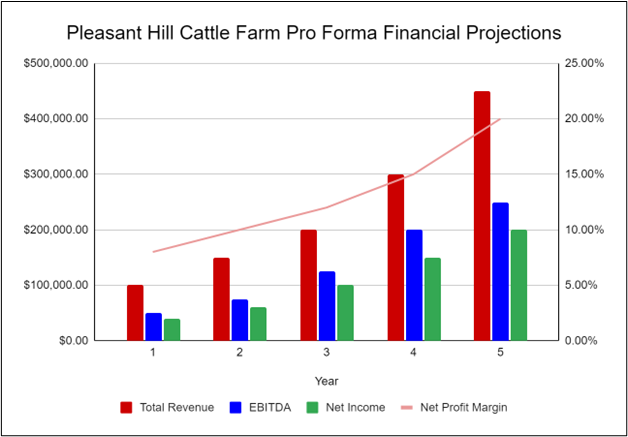
Company Overview
Who is pleasant hill cattle farm.
Pleasant Hill Cattle Farm is founded and run by Matthew Jones. Matthew has been a cattle farm operations manager for the past ten years, so he has in-depth knowledge and experience running a business in this industry. Matthew will run the general operations and administrative functions of the company and hire other employees to manage the sales and day-to-day operations.
Pleasant Hill Cattle Farm History
Matthew Jones is an entrepreneur who seeks to contribute to the growing US economy through cattle farming. Pleasant Hill Cattle Farm will become a recognized cattle farming company in Des Moines, Iowa, ensuring a continuous supply of cattle, milk, meat, and other dairy products.
Matthew has selected an initial location and is currently undergoing due diligence on it and the local market to assess if it is a suitable location for a commercial cattle farm.
Since incorporation, the company has achieved the following milestones:
- Found a farm location
- Developed the company’s name, logo, and website
- Determined supply requirements
- Began recruiting key employees
Pleasant Hill Cattle Farm Services
Industry analysis.
Pleasant Hill Cattle Farm competes against large-scale cattle farmers in the U.S. With the largest fed-cattle industry in the world, the United States is also the world’s largest producer of beef, primarily high-quality, grain-fed beef for domestic and export use. According to the USDA, beef cattle production in the US is one of the largest agricultural industries, making up 17% of the agricultural sector. Though the industry has declined slightly in the past few years, the market size of the Beef Cattle Production industry is expected to increase by 4.5% over the next five years.
Improving the living standards of the people in the country has resulted in a shift in meat preferences, with most choosing beef-based products rather than products derived from pork and chicken. This trend has helped increase revenues and allowed the industry to grow. However, the beef cattle production industry faces many challenges including droughts, the price of feed, and the increasing popularity of plant-based diets.
Customer Analysis
Demographic profile of target market.
Pleasant Hill Cattle Farm will primarily serve local residents and retailers of cattle dairy products and meat within a 30-mile radius of the farm. These businesses typically gross from $5 million to $10 million in annual revenues and source their supplies from within a 30-mile radius of their facilities.
The precise demographics for Des Moines, Iowa are:
Customer Segmentation
Pleasant Hill Cattle Farm will primarily target the following customer profiles:
- Grocery Stores
- Local Residents
Competitive Analysis
Direct and indirect competitors.
Pleasant Hill Cattle Farm will face competition from other companies with similar business profiles. A description of each competitor company is below.
Shayla Farms
Shayla Farms is one of the large-scale cattle farms in the US, owning an 8,000 ha area. It has well-established relationships with local retailers. It has been in business for 32 years. Shayla Farms offers good quality dairy products and meat. It also has automated equipment and machines, which helps in improving its operations. Moreover, it is also known for delivering large orders at the right time without delay.
Crimson Cattle Farm
Crimson Cattle Farm has been operating since 1995 and is a well-known company that provides good quality beef with affordable pricing as it has effective and efficient cattle rearing machines. It majorly targets local companies and retailers and has a large distribution network that can serve customers up to a 500-mile radius. Crimson Cattle Farm also has a very effective distribution and supply chain network. However, Crimson Cattle Farm’s offerings are only limited to beef.
Cattle USA has been in business for the past 50 years and enjoys great success. It is one of the largest beef producers in the 200-mile area. It easily caters to local residents primarily due to its prime location. It provides beef and a variety of dairy products including: cheese, yogurt, meat and milk.
Competitive Advantage
Pleasant Hill Cattle Farm will be able to offer the following advantages over their competition:
Marketing Plan
Brand & value proposition.
Pleasant Hill Cattle Farm will offer the unique value proposition to its clientele:
- Efficient and effective delivery network
- Good packaging
- Quality products at affordable pricing
- Providing excellent customer service and customer experiences
Promotions Strategy
The promotions strategy for Pleasant Hill Cattle Farm is as follows:
Social Media Marketing
Social media is one of the most cost-effective and practical marketing methods for improving brand visibility. The company will use social media to develop engaging content, such as sharing pictures of the cows and creating educational content about the cattle farm industry.
Website/SEO
Pleasant Hill Cattle Farm will develop a professional website that showcases pictures of the farm and the cows. It will also invest in SEO so that the company’s website will appear at the top of search engine results.
Word of Mouth/Referrals
Matthew Jones has built up an extensive list of contacts over the years by living and working in the midwestern farming industry. Since a number of local cattle farms have ceased operations, they have committed to Matthew that Pleasant Hill Cattle Farm will be their cattle supplier. They trust his work ethic and commitment to the local community.
Pleasant Hill Cattle Farm will highlight our location, cows, and products on a major billboard facing the busiest highway in town. The billboard will provide the location of Pleasant Hill Cattle Farm and the website URL.
Pleasant Hill Cattle Farm’s pricing will be moderate, so customers feel they receive great value when availing of the products. Pricing will be about 50% lower than retail prices to allow wholesalers and retailers to earn their margins.
Operations Plan
Operation Functions: The following will be the operations plan for Pleasant Hill Cattle Farm.
- Matthew Jones will be the Owner and President of the company. He will oversee all staff and manage client relations. Matthew has spent the past year recruiting the following staff:
- Sue Smith – will oversee all administrative aspects of running the cattle farm. This will include bookkeeping, tax payments, and payroll of the staff.
- George Baird– Head Farmhand who will oversee the farming staff and day to day operations.
- Ben Brown– Assistant Farmhand who will assist George.
- Frank White– Distribution Manager who will oversee the packaging and distribution of all products.
Milestones:
Pleasant Hill Cattle Farm will have the following milestones complete in the next six months.
- 6/202X – Finalize purchase of farm land
- 7/202X – Purchase farm equipment, supplies and materials
- 8/202X – Finalize contracts for grocery store, chain, and restaurant clients
- 9/202X – Purchase initial set of cows
- 10/202X – Hire and train farm staff
- 11/202X – Pleasant Hill Cattle Farm begins farm operations
Financial Plan
Key revenue & costs.
Pleasant Hill Cattle Farm’s revenues will come from the sales of cattle meat and dairy products to its customers. The major costs for the company will be the cost of land and equipment. The staff will earn competitive salaries allowing Pleasant Hill Cattle Farm to hire experienced workers. In the initial years, the company’s marketing spend will be high, as it establishes itself in the market.
Funding Requirements and Use of Funds
Key assumptions.
The following outlines the key assumptions required in order to achieve the revenue and cost numbers in the financials and pay off the startup business loan.
- Number of Cows: 300
- Average Revenue per Animal: $500
- Number of Products Sold Per Year: 100,000
Financial Projections
Income statement, balance sheet, cash flow statement, cattle farming business plan faqs, what is a cattle farming business plan.
A cattle farming business plan is a plan to start and/or grow your cattle farming business. Among other things, it outlines your business concept, identifies your target customers, presents your marketing plan and details your financial projections.
You can easily complete your Cattle Farming business plan using our Cattle Farming Business Plan Template here .
What are the Main Types of Cattle Farming Businesses?
There are a number of different kinds of cattle farming businesses , some examples include: Cow-calf, Backgrounding, Finishing, and Specific Breed.
How Do You Get Funding for Your Cattle Farming Business Plan?
Cattle Farming businesses are often funded through small business loans. Personal savings, credit card financing and angel investors are also popular forms of funding.
What are the Steps To Start a Cattle Farming Business?
Starting a cattle farming business can be an exciting endeavor. Having a clear roadmap of the steps to start a business will help you stay focused on your goals and get started faster.
1. Develop A Cattle Farming Business Plan - The first step in starting a business is to create a detailed cattle farming business plan that outlines all aspects of the venture. This should include potential market size and target customers, the services or products you will offer, pricing strategies and a detailed financial forecast.
2. Choose Your Legal Structure - It's important to select an appropriate legal entity for your cattle farming business. This could be a limited liability company (LLC), corporation, partnership, or sole proprietorship. Each type has its own benefits and drawbacks so it’s important to do research and choose wisely so that your cattle farming business is in compliance with local laws.
3. Register Your Cattle Farming Business - Once you have chosen a legal structure, the next step is to register your cattle farming business with the government or state where you’re operating from. This includes obtaining licenses and permits as required by federal, state, and local laws.
4. Identify Financing Options - It’s likely that you’ll need some capital to start your cattle farming business, so take some time to identify what financing options are available such as bank loans, investor funding, grants, or crowdfunding platforms.
5. Choose a Location - Whether you plan on operating out of a physical location or not, you should always have an idea of where you’ll be based should it become necessary in the future as well as what kind of space would be suitable for your operations.
6. Hire Employees - There are several ways to find qualified employees including job boards like LinkedIn or Indeed as well as hiring agencies if needed – depending on what type of employees you need it might also be more effective to reach out directly through networking events.
7. Acquire Necessary Cattle Farming Equipment & Supplies - In order to start your cattle farming business, you'll need to purchase all of the necessary equipment and supplies to run a successful operation.
8. Market & Promote Your Business - Once you have all the necessary pieces in place, it’s time to start promoting and marketing your cattle farming business. This includes creating a website, utilizing social media platforms like Facebook or Twitter, and having an effective Search Engine Optimization (SEO) strategy. You should also consider traditional marketing techniques such as radio or print advertising.
Learn more about how to start a successful cattle farming business:
- How to Start a Cattle Farm Business
How to write a business plan for a cattle farm?

Are you an aspiring cattle farmer looking to start up a business, or an existing one looking to expand and become more profitable? If so, then writing a business plan for your cattle farm is essential.
A well-crafted business plan can help you identify potential opportunities and risks associated with running a cattle farm, as well as guide you on how best to manage the operations of the farm.
In this in-depth guide, we’ll explore why it’s important to write a business plan for your cattle farm, what information is required to create one, what should be included in the document itself, and which tools are available that can make the process easier.
Let’s get started!
In this guide:
Why write a business plan for a cattle farm?
- Information needed to create a business plan for a cattle farm
- What goes into your cattle farm financial forecast?
- The written part of a cattle farm business plan
- What tool should I use to write my cattle farm business plan?
To draw up a roadmap
A business plan for a cattle farm helps you define your objectives and set goals for the next 3-5 years, which can be incredibly useful for achieving success in the long run.
The writing process of a business plan requires careful consideration of all aspects of running your cattle farm, from financial management to sales & marketing strategies and operational procedures.
Having these clear objectives laid out ahead of time will help ensure that your cattle farming venture runs smoothly and achieves its desired outcomes.
To compare financials and track progress
One of the main benefits of writing a business plan for a cattle farm is to be able to regularly compare your actual financial performance against what you planned in your forecast, and make adjustments where needed.
This enables you to maintain visibility on your future cash flows and make informed decisions about investments to grow your farm.
To secure funding
If you want to receive capital from investors or banks, you must have a comprehensive cattle farm business plan.
Financiers will be looking closely at your venture's growth prospects, profitability, and cash flow to estimate the possible returns on their investment.
Now that you know why it’s important to write a business plan for a cattle farm, let's look at the information needed to create one.
Create your cattle farm business plan online!
Think your cattle farm could be profitable? Find out how with a business plan!

What information is needed to create a business plan for a cattle farm?
Carrying out market research for a cattle farm.
Conducting market research is an essential step before creating a business plan for a cattle farm. Market research can help you to estimate revenues and provide insights into potential areas of growth or decline.
When you embark on market research of your cattle business, you seek to answer the following questions:
- Is the cattle industry growing?
- What segments (processed milk products, beef processing and packaging, breeding services, and cowhide sale) of the market are most attractive?
- Who is the competition?
- How long does it take from calving to sales?
- What is the best time for breeding?
- What are sales and profit margins like?
- What are the major trends in the cattle industry? For example, consumers are more interested in organic-bred cattle than those bred using hormones, steroids, and antibiotics.
This information will help you create and communicate in your business plan the strategies that will give your farm the best chance for success.
Developing the marketing plan for a cattle farm
Creating a sales & marketing plan for your cattle farm is the next step.
Having a concrete action plan in place will be necessary to create an accurate budget for sales and marketing expenses in your business plan, and to ensure that you have sufficient resources to deliver your sales forecast.
The staffing and equipment needs of a cattle farm
Before starting a cattle farm business plan, it is also key to take into consideration the investments and recruitment plan.
This will ensure that all necessary costs are accounted for and that sufficient capital is available to launch or grow the venture.
Some of the costs you must be aware of includes:
- Land purchase
- Fencing the land
- Land preparation
- Water source or supplies
- Tools and equipment costs
- Cattle shelter
- Cattle purchases
- Licenses and permits
Once you have gathered all the necessary information to create the business plan for your cattle farm, it is time to start building the financial forecast.
What goes in the financial forecast for a cattle farm?
The financial forecast of a cattle farm’s business plan will include important information like the Profit and Loss (P&L) statement, balance sheet, cash flow statement, and sources and uses table.
Let’s have a look at each table in a bit more detail.
The projected P&L statement
The projected P&L statement of a cattle farm business plan shows how much revenues it is expected to generate, how sales will evolve and how profitable it can be in the future.
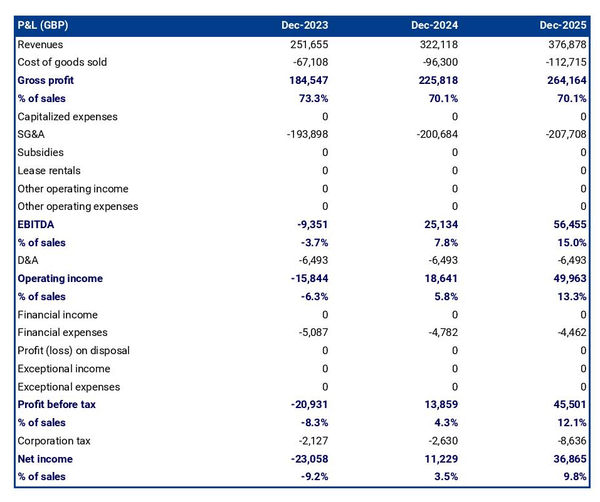
The projected balance sheet of your cattle farm
The balance sheet of a cattle farm is an essential financial statement that provides a snapshot of the farm’s financial position at any given time.
It records the assets, liabilities, and equity of the farm and serves as a valuable tool for owners, investors, and lenders to understand the overall financial health of the venture.
Assets are what a business owns and uses to make money. Examples of assets for a cattle farm include:
- Machinery and equipment
Liabilities on the other hand are what the business owes, they include things like:
- Accounts payable (money owed to suppliers)
- Tax payables
When total liabilities are deducted from total assets, what is left is the owner’s equity which represents the net worth of the business for the owners.
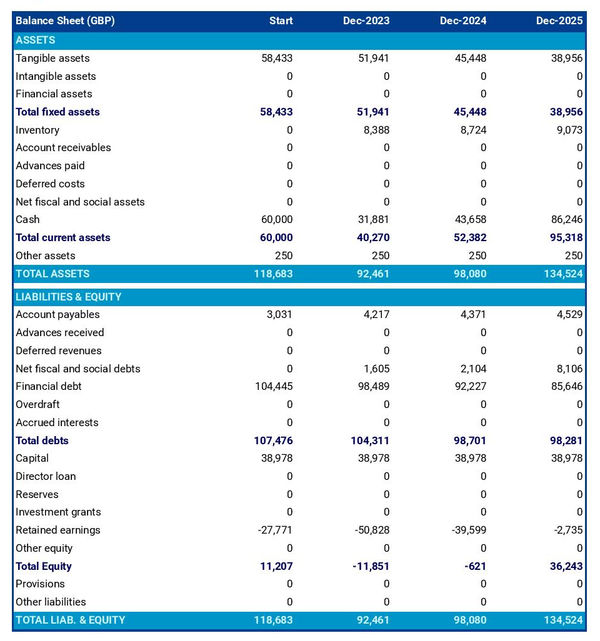
The projected cash flow statement
A projected cash flow statement for a cattle farm is a financial document that shows how much cash the farm will generate and spend in the future.
All transactions that involve the inflow and outflow of cash from a business are recorded in the cash flow statement.
This statement makes it easy for financiers to understand how much money your business produces (or will produce) and how much cash it will need for smooth operations.

The initial financing plan
An initial financing plan is important when writing a cattle farm business plan. It is also called sources and uses table.
This table helps you figure out how much money you will need to start your farm, where it will come from, and what it will be used for.
Having this information all in one place makes it easier to plan your finances and prepare for the future of your business.

A solid financial forecast is the foundation for any successful cattle farm business plan. But to understand how relevant this financial data is, it's essential to provide context within the written part of the plan.
What goes in the written part of a cattle farm business plan?
The written part of a cattle farm business plan consists of 7 main sections:
The executive summary
The presentation of the company, the products and services section, the market analysis, the strategy section, the operations section, the financial plan.
The executive summary section of your cattle farm’s business plan should be a one-page (two-page maximum) summary presented in such a way that will convince investors and banks to read the rest of the plan.
The executive summary of your cattle farm business plan should begin with an overview of the farm itself, including key points such as the purpose of the business, its legal structure, its management team, and any pertinent information about the geographic area in which it operates.
After this should come a quick market overview highlighting who the farm sells to and who it competes with.
Then you should include key financials such as forecasted sales, growth, and profit, as well as expected cash flow projections and capital requirements.
This section of your business plan should include details about the ownership and legal structure of your cattle farm, your farm’s location, and information about the management team.
When writing about the legal structure, you should include information about the legal entity that owns the farm, such as whether it is a sole proprietorship, limited liability company, partnership, or other type of legal ownership.
You should also list the shareholders (people with a stake in the business) and the percentage of ownership each one holds.
The location section should provide an overview of the geographical area where the farm is located, with information about nearby cities and towns, access to major roads and highways, availability of water sources, climate considerations, and any other factors that could influence the success of the farm.
Then you should continue with the presentation of the management team which provides an in-depth look at who is running the farm’s day-to-day operations, including information about each individual's experience, education, and qualifications for their specific roles on the farm.
When writing the products and services section of your business plan for a cattle farm, it is important to clearly describe what breed of cattle (lisrace lumberjack, bos taurus, Angus cattle, etc.) you will raise and any other related services or products that you may offer.
This should include information about the size and quality of the herd, as well as any specialized breeds or special care practices used in raising them.
It is also important to outline any additional sources of income such as selling hay, feed, or providing agricultural consulting services.
Additionally, outlining plans for expansion into new markets could help convince investors that this is an enterprise with growth potential.
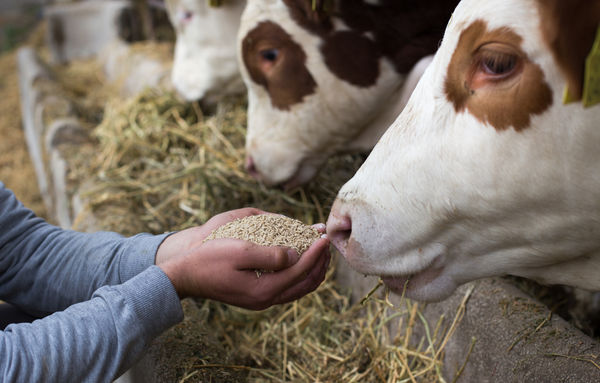
When presenting the conclusion of your market analysis in your cattle farm business plan, you should touch on demographic and segmentation information, your target market and competitors, and details about any barriers to entry and relevant regulations that you must comply with.
The demographic and segmentation section should include information about the different customer segments on the market and their purchasing habits for each of the main categories of products and services.
The target market section then zooms in on the segments you intend to serve and why your products and services match what customers are looking for.
Then you should explain who your main competitors are, and how your products and services compare to theirs.
You should also consider any potential barriers that can impede entry into the market (such as a limited availability of farm land for example) and relevant regulations that must be adhered to for compliance purposes.
In the strategy section of your cattle farm's business plan, you should explain your competitive advantage, price strategy, marketing plan, milestones, and risks and mitigants.
To demonstrate the financial viability of your farm, you must be able to clearly explain what your competitive advantage is - i.e. how you intend to compete in an already crowded marketplace.
In addition, you should include details of your pricing strategy and show that it is profitable for you and attractive for customers.
Then comes your sales and marketing plan which outlines how you will reach your target markets, followed by any important and realistic milestones which are achievable within specified time frames.
Finally, you must detail any potential risks associated with your farm and possible solutions or mitigations for these risks.
The operations section of your cattle business plan should provide an overview of the functions and activities of your cattle farm.
It should cover information such as the staffing team, roles of staff members, recruitment plan, operating hours, key assets, and intellectual property needed to operate the farm.
A cattle farm may have the following type of staff on its payroll:
- Farm manager
- Slaughterer
- Veterinarian
For example, if you plan on hiring a veterinary technician or farm manager, explain their experience requirements and how they will contribute to the operation of your business.
You should also include your schedule and operating hours to give investors an idea of what a typical business day for your farm looks like, as well as information on the main assets and intellectual property that the business requires to operate.
These assets include any resources such as land, buildings, equipment or technology essential for running the farm. If you plan on leasing or buying any of these assets, provide details about the timelines and costs involved.
Lastly, the operations section should include information about the suppliers that you plan to work with. Be sure to provide details such as the cost of goods, delivery times and any other relevant commercial terms.
This will give investors a better understanding of how you plan on running your farming operation.
The financial plan section of the cattle farm business plan will include the financial forecast (balance sheet, P&L and cash flow statements, and the sources and uses table) that we talked about earlier.
Now that you have a clear understanding of the content of your cattle farm business plan, it's time to look at the tools available for creating one.
What tool should I use to write my cattle farm's business plan?
In this section, we will look at three options for writing a detailed business plan for your cattle farm: writing it yourself with Word and Excel, hiring a consultant to do it, and using online business plan software.
Create your cattle farm's business plan using Word or Excel
Creating a cattle farm business plan with Word or Excel is a possible option but usually not the best one.
On the plus side, both programs are relatively inexpensive. However, there are some significant drawbacks to using these programs to create a business plan.
Excel isn’t an easy tool to use, especially when it comes to creating financial forecasts without making mistakes.
As a result, it will be hard for financiers to trust the accuracy and validity of your numbers, and, therefore, using Excel isn’t recommended unless you are well versed into the art of accounting and finance.
Drafting the written part with Word also suffers from severe flaws. You start from scratch with no instructions to aid you, forcing you to think long and hard before filling up the pages. It is also time-consuming and tedious to format your business plan with Word.
Hire a business plan writer to draft your cattle farm's business plan
Outsourcing the business plan for a cattle farm to a consultant can be a viable solution as they are used to writing such plans. But this solution also comes with certain disadvantages.
Business plan writers may lack the livestock industry expertise needed to anticipate sales and cost accurately, forcing them to rely on your assumptions.
Hiring consultants to write a business plan is also expensive (budget a minimum of $2,000 or £1,500), with additional fees if the business plan needs to be updated after the initial version has been produced.
Finally, hiring a consultant gives you less control over the result than writing it yourself and your vision for the farm's future may not be adequately presented in the business plan.
Use an online business plan software for your cattle farm's business plan
Another alternative is to use online business plan software .
There are several advantages to using specialised software to write a cattle farm’s business plan:
- You are guided through the writing process by detailed instructions and examples for each part of the plan
- You can be inspired by already written business plan templates
- You can easily make your financial forecast by letting the software take care of the financial calculations for you, without error
- You get a professional document, formatted and ready to be sent to your bank
- You can easily update your financial forecast and track it against actual financial performance to see where the farm stands
If you're interested in using this type of solution, you can try our software for free by signing up here .
We hope that this article has helped you to better understand how to write the business plan for a cattle farm. Do not hesitate to contact us if you still have questions.
Also on The Business Plan Shop
- How to write a business plan for a poultry farm
- How to write a business plan for a fish farm
Know someone in the farming industry? Share this article with them!

Founder & CEO at The Business Plan Shop Ltd
Guillaume Le Brouster is a seasoned entrepreneur and financier.
Guillaume has been an entrepreneur for more than a decade and has first-hand experience of starting, running, and growing a successful business.
Prior to being a business owner, Guillaume worked in investment banking and private equity, where he spent most of his time creating complex financial forecasts, writing business plans, and analysing financial statements to make financing and investment decisions.
Guillaume holds a Master's Degree in Finance from ESCP Business School and a Bachelor of Science in Business & Management from Paris Dauphine University.
Create a convincing business plan
Assess the profitability of your business idea and create a persuasive business plan to pitch to investors

500,000+ entrepreneurs have already tried our solution - why not join them?
Not ready to try our on-line tool ? Learn more about our solution here
Need some inspiration for your business plan?
Subscribe to The Business Plan Shop and gain access to our business plan template library.

Need a professional business plan? Discover our solution
Write your business plan with ease!

It's easy to create a professional business plan with The Business Plan Shop
Want to find out more before you try? Learn more about our solution here
Farming With Precision!

How To Start A Lucrative Farming Business In Philippines
In the Philippines today, farming is one of the important aspects of the economy, it is known to contribute over 14% of the total nation’s Gdp.
However, over the last 2 decades, there has been about a 10 % reduction in GDP contributed by the agricultural sector. Reasons not farfetched from poor remuneration and lack of government support for the sector.
So to get started with profitable farming in the Philippines, you need to acquire farmland, embark on both livestock farming and crop cultivation, and market your products outside the coast of the country.
So in this guide, we will be giving information on how you can venture into profitable agriculture in the Philippines and all you need to know.
How To Start A Lucrative Farming In the Philippines Step By Step Guide
Table of Contents
Follow the guide below to start farming in the Philippines;
Step 1: Identify the size and type of farming you want to start
Crop farming and animal husbandry are two of the most common agricultural activities, although there are many other options available.
That said, we think you’re here to cultivate crops, that is what we will focus on entirely in this content. Determine how big or little you want your crop-growing business to be before you get started.
You can start out on a huge or small scale, or even in your own backyard. With this focus, you’ll gain clarity on what to do, how much capital to set aside, and a slew of other things.
Read Also: How To Start Farming Business In Nigeria [PDF Guide]
Step 2: Go for training
Depending on the usual practices in your chosen area, you may need to look into them further by taking courses online and reading up about the crop you want to venture into.
Whether you want to start a tomato farm or a poultry farm, the best agricultural methods for each are different, therefore you should do further research on the type of farming you want to do.
In the event that you need assistance in a particular area, please let us know in the comments section. Experts in farming can help you choose the best techniques for any region you’ve selected.
Read Also: How To Start Farming In Ghana Step By Step Guide
Step 3: buy your farmland
Before beginning a farming career, you must first purchase agricultural land. There is a direct correlation between how large you want your farm to be and how much land you will need.
Anywhere from one acre to many acres may be needed for your project.
Step 4: Deforest the Land
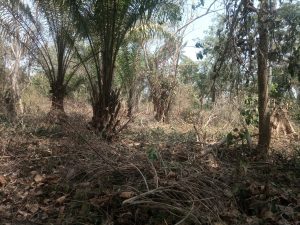
Your next task is to clear the farmland of all trees, grasses, shrubs, and forests. You can utilize either a machine or human labor to do this task.
The size of your farm will play a role in your decision, as manual labor is best suited for farms with a total area of 1 to 3 acres. However, if you wish to acquire or plan to buy more than 5 acres, it is best to employ a machine.
After clearing, burn the brush to get rid of unwanted shrubs and weeds, which will make farming more efficient and less time-consuming on the farm.
Step 5: Start making heaps/ridges
In some cases, you may not need to form ridges if you’re planting cocoa, palm, cashew, mango, rice, and many other types of crops.
It’s possible that you’ll need to form ridges to better support the root systems of your crops if you’re growing things like tomatoes, yams, millets, and groundnuts, for example.
Step 6: Start Planting your desired crops
During this period, you can begin planting your desired crops. Make sure you buy the greatest possible strain of the crop you intend to grow. ” If you need any seed, feel free to ask in the comments area.
Profitable Farming To Start In the Philippines
Following is the list of crops and animals you can start in the Philippines that will increase your income.
Tomato farming:
You can start tomato farming in the Philippines and set up a local company that can package it into processed ones. It can be processed into tin tomatoes, sachet tomatoes, and many other forms that can be exported out of the country.
Palm Farming:
You can venture into the growing and processing of palm fruits. Palm fruits are grown for their seed which is in turn processed into red oil which is in high demand. The beauty of this plant is that it can grow on any soil type.
Goat Farming:
You can start goat farming in the Philippines to export outside of the country.
Poultry farming:
Poultry is one of the most profitable ventures to start anywhere in the world. So, you can venture into this either for meat production (Broilers farming) or egg production (Layers farming)
The demand for pork meat and its derivatives are in high demand, Philippines farmers can leverage this and start raising pigs for exportation.
Cattle Ranching:
The demand for milk and dairy produce is never going to be low, so, you can level leverage on this and start raising cows for meat production and milk processing.
Major problems of Agriculture/farming in the Philippines
Low diversification:.
Farmers in the Philippines lack the ability to diversify into growing crops and livestock that are in high demand even in the neighboring countries. Famers limit their farming scope to the traditional rice, coconut, corn, and others that are locally consumed.
Lack of access to funds:
Most farmers who are ready to farm in the Philippines lack access to capital to venture into it, or have a fund that is not sufficient for running and setting up a proper farm.
Lack of Agricultural input:
Most input that is needed for standard farming such as hybridized crops, and improved breed of animals are not readily available for farmers.
Low literacy level:
Most farmers in the Philippines are illiterates, this, in turn, tells in the practices they embark on, the type of seed they plant, and many more.
The solution to problems of Agriculture/farming in the Philippines
Farmers should learn to grow other plants:.
Farmers should learn to diversify into the growth of plants that are in high demand such as cocoa, palm, rubber, cashew nut, and maize. Doing this will expand their capacity for international sales which will increase the country’s GDP and accelerate farmers’ standard of living.
Government Should Make loan Accessible to farmers:
The government should encourage farming habits by making funds and expensive equipment available for farmers who are interested in farming.
Agricultural awareness program:
Government should set up a body that will sensitize people on the importance of farming, and how to start profitable farming in the Philippines, and also guides them to make a living from farming.
What are the most profitable crops in the Philippines?
According to statistics pineapple and tomatoes are the most profitable and lucrative crops in the Philippines.
Is farming in the Philippines profitable?
Yes, but you must learn to diversify into planting varieties of crops and also venture into animal husbandry.
What is the most profitable crop in the Philippines in 2024?
How much do filipino farmers earn.
Averagely farmers earn P331.10 in a day.
Why farmers are poor in the Philippines?
Why most Philippines farmers are poor is because of a lack of capacity for diversification, lack of education, economy, and social hullabaloo.
Is buying a farm a good investment Philippines?
Yes, it is a long-lasting and low-risk investment.
What is the biggest problem in agriculture in the Philippines?
The biggest agricultural problem in the Philippines is the lack of diversification. Farmers in the Philippines lack the ability to diversify into growing crops and livestock that are in high demand even in the neighboring countries. Famers limit their farming scope to the traditional rice, coconut, corn, and others that are locally consumed.
In conclusion, in time past, farming has been seen as a poor man’s profession in the Philippines which is against the true potential that is embedded in agriculture. We have done justice to how you can start farming in the Philippines and all you need to know about it.
Share this:
Author: Adewebs
You may also like:.
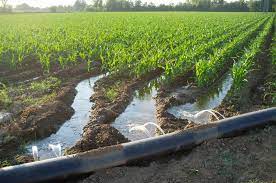
What Is Farrow Irrigation? [All You Need To Know]

How To Start Farming With No Money [Beginners Guide]
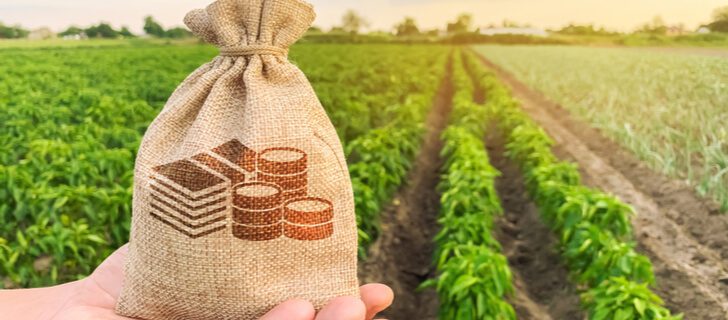
10 Agricultural Cooperatives California

[Beginners Guide] How to Start a Small Farm in Texas
3 replies to “ how to start a lucrative farming business in philippines ”.
- Pingback: How To Grow Onions In Philippines 2022 [Beginners Guide Pdf]
I would to know the following: 1. Do I need to get a business license if I take care 10 cows? 2. I would like to attend a seminar in Sto Tomas, Batangas. Do you offer one in that location?
Yes you may need to get license, but you may check with your local authorities to get clearer picture
Leave a Reply Cancel reply
Your email address will not be published. Required fields are marked *
Save my name, email, and website in this browser for the next time I comment.
Notify me of follow-up comments by email.
Notify me of new posts by email.

How To Write a Business Plan for Cattle Farming in 9 Steps: Checklist
By alex ryzhkov, resources on cattle farming.
- Financial Model
- Business Plan
- Value Proposition
- One-Page Business Plan
- SWOT Analysis
- Business Model
Welcome to our blog post on how to write a business plan for cattle farming! Cattle farming is a thriving industry that offers immense opportunities for entrepreneurs seeking to enter the agricultural sector. According to the latest statistics, the global market for meat and dairy products is projected to reach $2.8 trillion by 2025 , showcasing the immense potential for success in this field.
However, starting a cattle farming business requires careful planning and execution. To help you navigate through the process, we have identified nine essential steps that will serve as a checklist for writing an effective business plan. From evaluating market demand to assessing risks and developing a comprehensive strategy, each step is crucial for setting up a profitable cattle farm.
So, let's dive in and explore the key components of a successful business plan for cattle farming. By following this step-by-step guide, you will be well-equipped to embark on your entrepreneurial journey in the lucrative world of cattle breeding and meat and dairy production.
Evaluate Market Demand And Research Target Market.
Before starting a cattle farming business, it is crucial to evaluate market demand and thoroughly research your target market. This step will provide valuable insights into the potential profitability and sustainability of your venture.
Market demand assessment involves determining the demand for cattle meat and dairy products in your area. Research local consumer preferences, current market trends, and potential growth opportunities. Consider factors such as population size, income levels, cultural preferences, and dietary habits.
Target market research involves identifying and understanding your ideal customers. Determine the specific market segment you want to cater to, such as restaurants, grocery stores, or direct consumer sales. Research their preferences, pricing expectations, and volume requirements to tailor your business plan accordingly.
Here are some tips for evaluating market demand and researching your target market:
- Conduct surveys or interviews with potential customers to gauge their interest and preferences.
- Study existing competitors to identify gaps and opportunities in the market.
- Seek expert guidance from industry professionals or consultants who specialize in livestock or agricultural market research.
- Stay updated with industry publications, trade shows, and online forums to gather insights into the latest consumer trends and demands.
By thoroughly evaluating market demand and researching your target market, you can strategically position your cattle farming business to meet the needs of your customers and capitalize on potential market opportunities.
Determine The Scale And Scope Of The Cattle Farming Operation.
When starting a cattle farming business, it is crucial to determine the scale and scope of the operation. This step involves assessing the size of the farm and the number of cattle that can be efficiently managed.
1. Identify your production goals: Determine the purpose of your cattle farming venture. Are you primarily focusing on meat production or dairy products? Knowing your production goals will help you decide the scale of your operation.
2. Consider your available resources: Assess the resources you have, such as the land available for grazing and the capital investment you can allocate for purchasing cattle and necessary equipment. Take into account the labor and infrastructure requirements as well.
3. Research market demand: Investigate the market demand for cattle products in your target area. Analyze the competition and consumer preferences to determine how much cattle you need to raise to meet demand and make your venture economically viable.
4. Evaluate your expertise and experience: Consider your level of cattle farming knowledge and experience. Starting small may be wise for beginners, allowing you to gain valuable knowledge and skills before expanding the operation.
- Consult with experienced cattle farmers or agricultural experts to gain insights into the appropriate scale and scope for your operation.
- Consider starting with a smaller number of cattle and gradually increasing the herd based on your success and market demand.
- Assess the availability of veterinary services and infrastructure for managing a specific number of cattle in your area.
By determining the scale and scope of your cattle farming operation, you will be able to plan and allocate resources effectively and set achievable goals. This step is crucial for developing a successful and sustainable cattle farming business.
Assess The Financial Feasibility And Viability Of The Venture
Before embarking on a cattle farming business, it is crucial to assess the financial feasibility and viability of your venture. This step is essential to ensure that your business can generate enough revenue to cover expenses and generate profits.
To assess the financial feasibility, start by conducting a thorough analysis of the costs involved in starting and operating a cattle farm. This includes expenses such as purchasing land, acquiring cattle stock, building facilities, procuring equipment and supplies, and covering operational costs like feed, veterinary care, and labor.
Consider conducting market research to determine the potential revenue streams for your cattle farming operation. Identify the demand for meat, dairy products, and by-products derived from the cattle, such as leather and tallow. Understand the pricing dynamics in the market and analyze the profitability of these products.
Tip 1: Calculate the breakeven point for your cattle farming business. Determine the number of cattle you need to sell or the amount of products you need to produce and sell to cover all your costs. This will help you understand the minimum sales volume required to make a profit.
Tip 2: Create a comprehensive financial projection for your cattle farming business. Estimate the income generated from the sale of cattle and related products, and also consider factors like seasonal fluctuations and market trends. Assess the cash flow and profitability of your venture over a specified period, typically the first few years of operation.
Next, analyze the funding requirements for your cattle farming business. Evaluate your own financial resources and determine if additional capital is necessary. Research potential sources of funding, such as loans, grants, or investors.
Tip 3: Seek the assistance of a financial expert or a business consultant to ensure accurate analysis and provide guidance in assessing the financial feasibility and viability of your cattle farming venture.
By thoroughly assessing the financial feasibility and viability of your cattle farming business, you will be better equipped to make informed decisions and develop an effective business plan.
Determine The Legal Requirements, Regulations, And Permits.
When starting a cattle farming business, it is crucial to understand and comply with the legal requirements, regulations, and permits associated with this industry. Ensuring compliance will not only keep your business running smoothly but also avoid any potential legal issues in the future.
1. Research and familiarize yourself with local, state, and federal regulations: Each jurisdiction may have specific rules and regulations pertaining to cattle farming, such as zoning restrictions, animal welfare standards, and environmental regulations. It is essential to thoroughly research and understand these regulations to ensure compliance.
2. Obtain necessary permits and licenses: Contact your local authorities and agricultural departments to determine which permits and licenses are required for operating a cattle farm. These may include permits for land use, livestock transportation, and waste management. Acquire all the necessary documents and approvals before commencing your operations.
3. Ensure compliance with animal welfare standards: Animal welfare is a key aspect of running a cattle farm. Familiarize yourself with the regulations concerning the welfare, health, and treatment of the animals. This may include proper housing, feeding, and veterinary care. Ensure that your farm practices adhere to these standards at all times.
4. Understand food safety and inspection requirements: If you plan to sell meat or dairy products from your cattle, it is crucial to comply with food safety and inspection requirements. Research the regulations regarding processing, storing, and selling these products. Implement proper hygiene practices and ensure that your facilities meet all safety standards.
- Consult with an agricultural lawyer or industry expert to ensure full compliance with all legal requirements.
- Maintain detailed records of all legal documents, permits, and licenses for easy reference and future audits.
- Stay updated with any changes or updates to regulations to ensure ongoing compliance.
By determining the legal requirements, regulations, and permits associated with cattle farming, you lay a strong foundation for your business's success. Complying with these requirements not only protects your business but also demonstrates your commitment to operating ethically, responsibly, and within the law.
Identify Suitable Land And Facilities For The Cattle Farm.
When starting a cattle farming business, it is crucial to identify suitable land and facilities that will cater to the needs of your cattle and provide an optimal environment for their growth and well-being. Here are some key considerations to keep in mind:
- Location: Look for land that is easily accessible for transportation and close to potential markets and suppliers. Consider factors such as proximity to water sources, availability of pasture, and favorable climate.
- Size: Determine the size of land necessary to accommodate the number of cattle you plan to raise. Ensure there is enough space for grazing, feeding, and other necessary activities.
- Infrastructure: Assess the existing facilities on the land, such as barns, sheds, fencing, and water systems. Adequate infrastructure is essential for efficient cattle management.
- Pasture Quality: Examine the quality and availability of pasture on the land. Nutrient-rich and well-maintained pasture is crucial for the health and nutrition of your cattle.
- Environmental Considerations: Evaluate any environmental factors that may impact the cattle farming operation, such as flooding risks, soil quality, and potential pollution sources.
- Consider consulting with agricultural experts or professionals to assess the suitability of the land for cattle farming.
- Ensure that the land and facilities meet all the necessary regulatory requirements and permits for operating a cattle farm.
- Investigate the history of the land and any potential legal restrictions or limitations that may impact your operations.
- Take into account future expansion plans and scalability when selecting the land and facilities.
- Consider leasing land as an alternative if purchasing is not financially feasible.
By thoroughly identifying suitable land and facilities for your cattle farm, you lay the foundation for a successful and sustainable operation. This step is crucial in ensuring your cattle have a comfortable and healthy environment to thrive, ultimately leading to higher-quality products and better customer satisfaction.
Research And Choose The Right Breed Of Cattle For The Farm.
When starting a cattle farming business, selecting the right breed of cattle is crucial for your success. The breed you choose will determine the productivity, adaptability, and profitability of your farm. Therefore, it is essential to conduct thorough research and evaluate various factors before making your decision.
1. Consider your target market: Research the specific demands and preferences of your target market. Determine whether they are looking for meat or dairy products, and choose a breed that aligns with their needs. This will help you maximize your profitability by meeting market demands.
2. Assess the breed's suitability for your location: Each breed has different requirements and tolerances for climate, geography, and available resources. Consider the environmental conditions in your area and choose a breed that can thrive in those conditions, leading to healthier and more productive cattle.
3. Evaluate the breed's traits and characteristics: Different breeds have varying growth rates, feed conversion ratios, temperaments, and disease resistance. Evaluate these traits to ensure they align with your production goals and management capabilities.
4. Consider the breed's market reputation: Some breeds have a higher market value and demand due to their reputation for superior meat or milk quality. Research the current market trends and preferences to choose a breed that will fetch a premium price.
5. Assess the breed's maintenance and management requirements: Consider the time, resources, and expertise required to care for and manage each breed. Some breeds may require more intensive management practices, while others may be more low-maintenance.
Tips for researching and choosing the right breed:
- Consult experienced cattle farmers or experts in the field for advice and guidance.
- Visit local farms or agricultural fairs to observe different breeds and interact with farmers.
- Consider joining cattle farming associations or online communities to gain insights from fellow farmers.
- Attend educational workshops or seminars on cattle farming to expand your knowledge about different breeds.
- Take into account the availability and cost of breeding stock for each breed.
By conducting thorough research and considering these factors, you can make an informed decision when choosing the right breed of cattle for your farm. This step is vital in ensuring the long-term success and profitability of your cattle farming business.
Develop A Comprehensive Business Model And Strategy
Developing a comprehensive business model and strategy is crucial for the success of your cattle farming venture. This step involves outlining the key elements of your business plan, including your value proposition, target market, revenue streams, and competitive advantage.
Firstly, define your value proposition - what sets your cattle farming business apart from others in the market. Identify the unique features, benefits, or advantages you offer to customers, such as sustainably raised cattle or high-quality products.
Next, conduct thorough market research to gain insights into the potential demand for your cattle and derived products. Assess the size of your target market, the competition, and any trends or opportunities you can leverage.
Based on your market research findings, determine the most suitable pricing and revenue strategies . Consider factors such as production costs, market demand, and profitability goals. Determine whether you will focus on direct sales to consumers, wholesale to retailers, or a combination of both.
Identify your marketing and sales channels. Determine the best avenues to reach your target audience and promote your products. Consider strategies like online marketing, participation in local farmers markets, or partnering with local butchers or retail outlets.
Tips for developing your business model and strategy:
- Take time to analyze your competitors and understand their strengths and weaknesses. Use this information to position your business effectively.
- Consider collaborating or partnering with other farmers or industry stakeholders to enhance your business model and access additional resources.
- Regularly review and update your business model and strategy to adapt to changing market conditions and customer demands.
Once you have determined your value proposition, target market, pricing strategies, and marketing channels, it's important to document your business model and strategies in a clear and concise manner. This will help guide your decision-making process and serve as a reference point as your cattle farming business grows and evolves.
Remember, a comprehensive business model and strategy will not only attract potential investors but also guide your day-to-day operations and ensure the long-term success of your cattle farming venture.
Plan The Production And Management Systems For The Farm.
Once you have determined the scale and scope of your cattle farming operation, it is essential to plan the production and management systems for your farm. This step involves strategizing the day-to-day activities, ensuring efficient operations, and maximizing the productivity of your cattle.
To effectively plan the production and management systems for your farm, consider the following:
Tips for planning the production and management systems:
- Identify feeding and nutrition: Research and determine the appropriate type and quantity of feed required for your cattle. Consult with experts or nutritionists to develop a balanced diet to ensure the growth and health of your animals.
- Establish a breeding program: Plan a breeding program to ensure a continuous supply of healthy and productive livestock. Consider factors such as genetics, breeding methods, and timing to optimize the breeding process.
- Create a record-keeping system: Maintain detailed records of each individual animal, including breeding history, medical records, and performance data. This information will help you track the progress of your cattle and make informed management decisions.
- Implement proper health management: Develop a comprehensive health management plan that includes regular vaccinations, deworming schedules, and preventive measures to minimize the risk of diseases and ensure the overall well-being of your cattle.
- Design efficient infrastructure: Plan the layout of your farm, including paddocks, barns, milking parlors, and handling facilities. Ensure efficient flow and easy access for both the cattle and the farm staff to optimize daily operations.
- Establish waste management practices: Consider environmentally friendly waste management techniques, such as composting or biogas generation, to minimize pollution and utilize waste products effectively.
By planning your production and management systems carefully, you can optimize the productivity of your cattle farm, maintain the health and welfare of your animals, and ensure the overall success of your business.
Assess Risks And Develop A Risk Management Plan.
When starting a cattle farming business, it's crucial to assess the potential risks involved and develop a comprehensive risk management plan. This step ensures that you are prepared to mitigate and address any uncertainties that may arise throughout the operation of your farm. By proactively identifying and managing risks, you can safeguard your investment and increase the profitability of your business.
One of the first steps in assessing risks is to identify the specific challenges that may impact your cattle farming venture. These risks can range from market fluctuations, disease outbreaks, natural disasters, or even equipment breakdowns. It's essential to consider both internal and external factors that could potentially disrupt your operations or affect your profitability.
After identifying the risks, it's necessary to evaluate their potential impact on your business. This evaluation will help you prioritize and focus on the most significant risks that require immediate attention. By understanding the potential consequences, you can allocate resources and develop appropriate strategies to minimize their impact and likelihood of occurrence.
A critical aspect of risk management is developing a plan to mitigate and address the identified risks. Consider the following key components:
- Risk prevention: Identify measures that can be implemented to prevent potential risks from occurring. This could include implementing proper biosecurity protocols, maintaining equipment regularly, or diversifying your product offerings to minimize dependence on a single market.
- Risk transfer: Evaluate opportunities to transfer certain risks to third parties, such as obtaining insurance coverage for natural disasters, livestock disease outbreaks, or liability claims.
- Risk control: Implement control measures to minimize the impact of risks that cannot be prevented or transferred. This could involve implementing proper biosecurity measures, establishing emergency response plans, or regularly monitoring and managing your herd's health.
- Risk recovery: Develop contingency plans to ensure business continuity in the event of a risk materializing. This may include having emergency funds, alternative marketing channels or securing backup suppliers for feed or equipment.
By assessing risks and developing a risk management plan, you demonstrate your commitment to the success and sustainability of your cattle farming business. This proactive approach allows you to address uncertainties effectively and increases your chances of overcoming challenges that may arise during operations.
- Regularly update and review your risk management plan to accommodate evolving risks and changes in your farming operations.
- Seek advice from industry professionals or consult with experienced cattle farmers to gain insights and practical strategies for managing risks.
- Stay informed about market trends, regulatory changes, and advancements in cattle farming practices to adjust your risk management strategies accordingly.
In conclusion, writing a business plan for cattle farming involves thorough research, careful planning, and strategic decision-making. By evaluating market demand, determining the scale of your operation, assessing financial feasibility, and understanding legal requirements, you can set yourself up for success.
Identifying suitable land, selecting the right breed of cattle, and developing a comprehensive business model and strategy are vital steps in building a successful cattle farm. Additionally, planning production and management systems, assessing risks, and developing a risk management plan are essential for long-term sustainability.
Starting a cattle farming business can be profitable and rewarding. By following these nine steps and utilizing the checklist provided, you can create a solid foundation for your venture, ensuring a thriving and prosperous cattle farming operation.
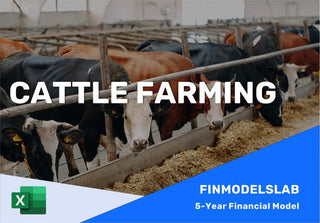
$169.00 $99.00 Get Template
Related Blogs
- Starting a Business
- KPI Metrics
- Running Expenses
- Startup Costs
- Pitch Deck Example
- Increasing Profitability
- Sales Strategy
- Rising Capital
- Valuing a Business
- How Much Makes
- Sell a Business
Leave a comment
Your email address will not be published. Required fields are marked *
Please note, comments must be approved before they are published
- Sample Plans
- WHY UPMETRICS?
Upmetrics AI Assistant: Simplifying Business Planning through AI-Powered Insights. Learn How
- 400+ Sample Business Plans
Customers Success Stories
Business Plan Course
Strategic Canvas Templates
E-books, Guides & More
Business consultants
Entrepreneurs and Small Business
Accelerators and Incubators
Educators & Business Schools
Students & Scholars
AI Business Plan Generator
Financial Forecasting
AI Assistance
Ai pitch deck generator
Stratrgic Planning
See How Upmetrics Works →
Small Business Tools
Entrepreneurs & Small Business
Accelerators & Incubators
Business Consultants & Advisors
Strategic Planning
How to Start Cattle Farm Business – Step by Step Guide

Free Business Startup Checklist
Sudeshna Ray
- December 18, 2023
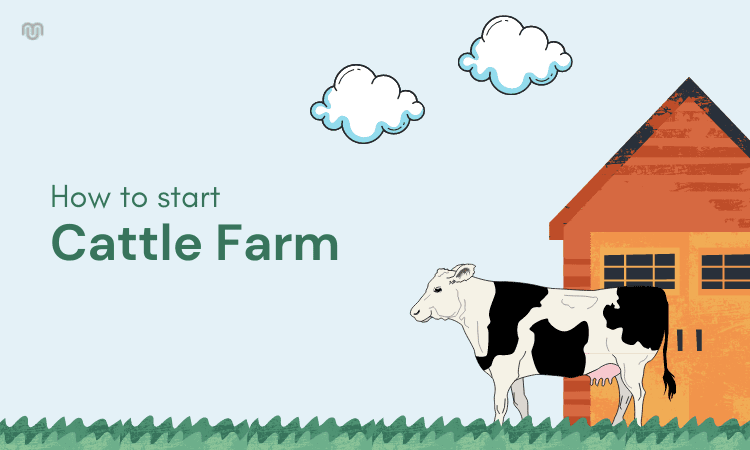
If you plan on starting a profitable business, then cattle farming can be an option for you.
You will require lots of funds and vast land to start this business. You can easily earn from either dairy products or even by selling animals on a large scale.
In case you are a beginner, here is a step-by-step guide for you about how to start with the cattle farm business , and by the end of this guide, you will be knowledgeable enough about how to go with your business and how to operate it successfully.
Steps to Start a Cattle Farming Business
Before we guide you step by step about your cattle farming business make sure that you have
- A sizeable area of land where you can shelter the animals
- Think about the particular breed of cattle you want
- A boundary wall or fence to protect the cattle
- Troughs made for feeding
- All types of equipment required for farming
- If possible, then a tractor
Once you are sure about these required items, you can move on to how to start your business. So, here we begin.
1. You Need a Business Plan to Start With!
Writing a business plan is essential, as it will help you out in sorting every aspect. Suppose you want your business plan to be right then. In that case, it must cover the cost of establishment, the cost of purchasing animals, the salary for the staff, the cost of cattle maintenance and their food, overheads, and the management of the pastures.
It would be best if you also kept planning regarding the situations of emergency so that it would not trouble you. Also, insurance purchasing for your animals will be a fruitful decision as you do not know what unforeseen occurrences you may encounter in the future. In a nutshell, a good business is one that will provide you with a solution when you are helpless.
2. Choosing a Location for the Farm
One of the most critical factors in cattle farming is selecting the ideal location for your business . Facilities like transportation and edible vegetation are very much required. It is best if you already have land, as purchasing may cost a lot.
Make sure to contact the office of local agriculture to have an idea about the vegetation, type of soil, rate of the stock market, capacity to carry pastures, demands of the market, and other criteria.
3. Purchasing of Machinery and Other Required Types of Equipment
You cannot just work with man labor as you require machine power to carry out specific tasks. Always regulate the size of your farm, the type of operation that you will be working on, the condition of your finance, and the facilities like- fencing, a shelter for cattle, feeding them, etc.
The bunks and watering facility is also required to be included.
4. Building Shelters for Your Cattle

The shelter is a mandatory factor for your cattle. To keep your cattle safe and secure, you have to build many parlors. In case you are planning on a dairy business, then you will require stanchions with parlors.
- Beef cattle require barns for themselves. You do not have to worry about them much.
- The water-providing source is required to keep your cattle hydrated and your pastures green.
- You may also require the installation of plumbing and other irrigation systems for your barn.
You will have to make stands that will hold the cows and other animals. Beef cattle do not require much maintenance, as just sheltering them is enough.
5. Decide the Purpose of Your Farm
Decide on the type of breed of cattle that you want to farm. The maintenance and budget differ for each breed, so plan accordingly. Most of the time, beginners start it with dairy products or beef.
Raising dairy cattle requires more maintenance and types of equipment in comparison to raising beef cattle. Sort it out before so that you do not get confused.
Select the breed that you want
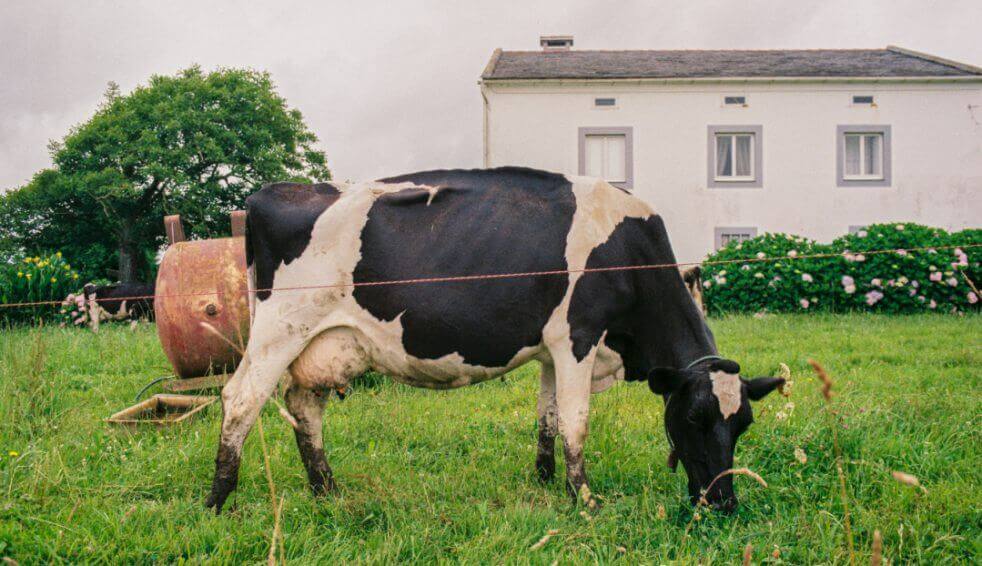
There are many cattle breeds that you can choose from. However, each cattle has its maintenance and advantages. However, always choose a breed that is readily available in your area. Do not choose something that may not be compatible with the vegetation or even the climatic condition. It is going to be your loss then.
Ayrshire, Jersey, Holstein, and Brown Swiss are some famous and common dairy cattle breeds. These are the breeds that are available almost everywhere.
In case you have decided to start beef cattle farming, you must choose those who are good in temperament and not intense. They must not be labor-intensive breeds like Galloway, British White, Hereford, Red Poll, and, Shorthorn. Angus is also the right choice. However, we would suggest you not go for them if you are a beginner. Their aggressive nature can cause a lot of problems.
However, you can also choose both breeds of beef and milk. It is how you prefer.
Purchasing of Cattle
Once you are settled with the purpose of your farm and also the type of breed, the next step is to buy the cattle. You can do this from any livestock present near you, or you can search online about the places where you can buy them.
While purchasing the cattle, check that they have traits like mothering ability, conformation that is great, and convertibility of temperament forage. Do not make haste and buy all of them in one go! Make sure to check all these traits, and buy only the favorable ones. Do not buy the ones that look thin and weak.
If you have a tight budget and you are planning to wait for two or more years, then Heifer can be an excellent option to go with. Do not buy a bull until and unless you have ten cows in your herd.
Artificial insemination breeding is better when you deal with such cases.
Animal Feeding
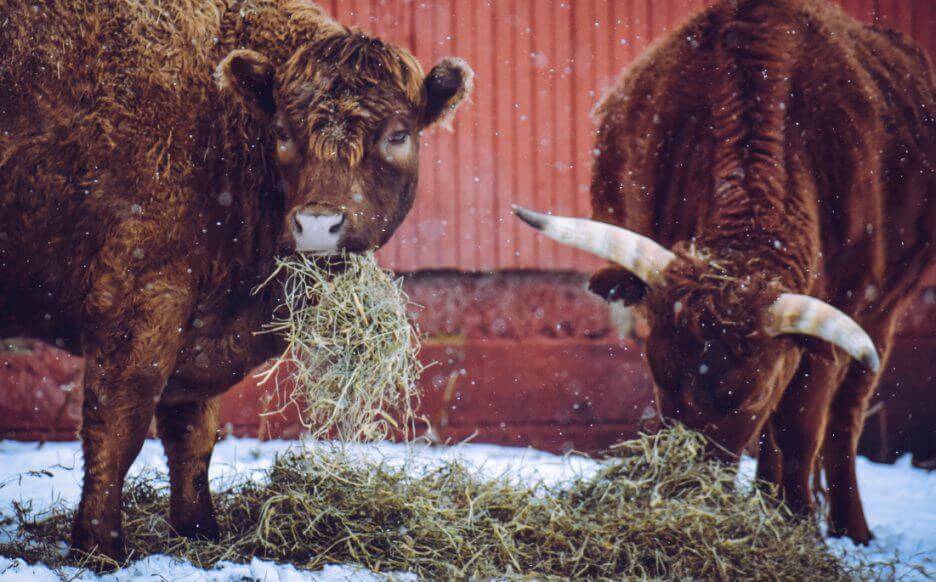
Whether you are doing business with dairy cattle or beef cattle, feeding them is very necessary. The quality of feeding should be of very high quality. They must stay healthy. Producing your feed for the cattle is an excellent option. However, you have to determine the amount of pasture that you might need for your cattle.
Please produce your hay, as buying it from another dealer may turn out to be expensive. As feeding your cattle may cost a lot, you have to be mentally prepared for all of these.
6. Taking Great Care of Your Animals
You also have to tend to the animal’s health and hygiene. You have to tend them with a lot of food and care so that they can stay all right.
Always call up a nutritionist, veterinarian, or other professionals
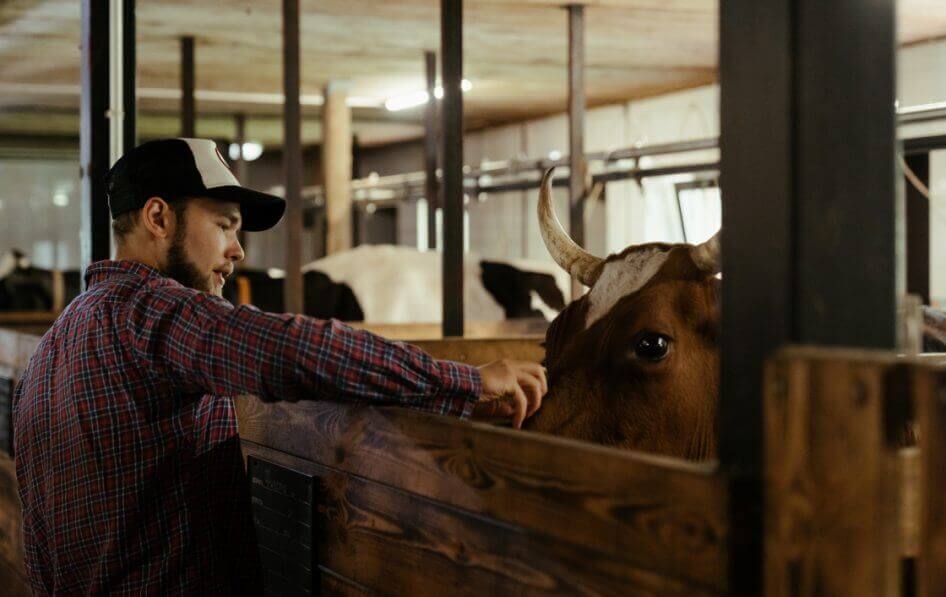
If you are involved in dairy cattle, then you have to take a lot of care. A good veterinarian or a nutritionist can help you out in keeping your cattle healthy. Calves are to be vaccinated annually right after they take birth. Also, seek advice from your nutritionist regarding the food that you will feed your cattle. Do maintain good relationships with these people.
- If you are buying your feed from someone, then make sure that you keep buying from that person only. Be good friends with them so that you can also get the right quality products for your cattle.
- Keep good contact with your farming organizations and neighbors. They can help you with the resources that you may require for your farm.
Make a place for waste management and compost for cow manure
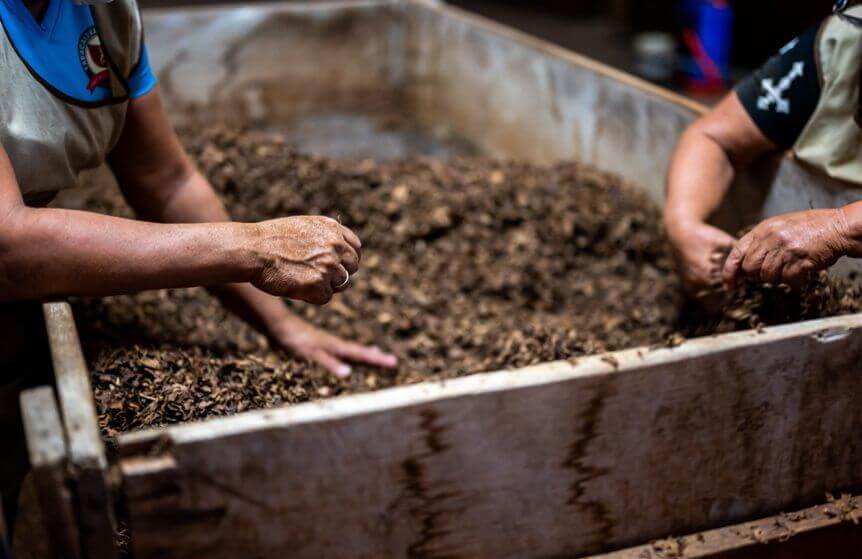
To put back proper nutrients in your pasture, you can use cow manure. Use it for the better, as unattended manure may attract flies and parasites that may create an unhygienic environment for your cattle. You can also use cow manure as fertilizer by storing them for months.
- Make a disposal plan for the manure, in case you do not want to make your compost.
- Do follow the laws if there are any. Some areas have rules and laws regarding compost.
Maintain records regarding your animals
Keep a record of all the finances, vaccinations, breeding, calving, purchases, sales, and every other important aspect of your operation. It is mandatory in some places to keep a record of your cattle herding.
You may even require some radio frequency tag for every animal that you purchase, sell, or even the newborns.
Always keep a clear mind about what you want to achieve. For a beginner, it might be a straining and exhausting procedure to do all these. But don’t deviate from your plan, and follow the steps for being successful.
Be sure to set up your farm with every piece of equipment like-fences, water systems, and barns before bringing in your cattle. Do not make haste while purchasing any equipment. Only purchase what you need. Make sure to complete all the paperwork and the permission issues regarding your work. Once you are all set, you can start operating your business.
The Quickest Way to turn a Business Idea into a Business Plan
Fill-in-the-blanks, AI-assistance, and automatic financials make it easy.

About the Author

Avid writer and content marketer, Sudeshna Ray, has created content for diverse premises including technical niches, business and marketing, finances, creative character sketches, and much more. Engineer-turned-Writer-turned-Marketer, she has explored several aspects of performance, lead generation and establishing a brand presence in the digital domain.
Related Articles

How to Write a Business Plan Complete Guide

How to Write an Effective Company Overview for Your Business Plan
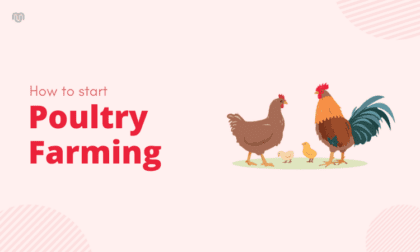
How to Start Poultry Farming Business – Step by Step Guide
Reach your goals with accurate planning.
No Risk – Cancel at Any Time – 15 Day Money Back Guarantee
Popular Templates


How to Start a Cattle Farm

Starting a cattle farming business can be very profitable. With proper planning, execution and hard work, you can enjoy great success. Below you will learn the keys to launching a successful cattle farm.
Importantly, a critical step in starting a cattle farm is to complete your business plan. To help you out, you should download Growthink’s Ultimate Business Plan Template here .
Download our Ultimate Business Plan Template here
14 Steps To Start a Cattle Farm :
- Choose the Name for Your Cattle Farm
- Develop Your Cattle Farm Business Plan
- Choose the Legal Structure for Your Cattle Farm
- Secure Startup Funding for Your Cattle Farm (If Needed)
- Secure a Location for Your Business
- Register Your Cattle Farm with the IRS
- Open a Business Bank Account
- Get a Business Credit Card
- Get the Required Business Licenses and Permits
- Get Business Insurance for Your Cattle Farm
- Buy or Lease the Right Cattle Farm Equipment
- Develop Your Cattle Farm Marketing Materials
- Purchase and Setup the Software Needed to Run Your Cattle Farm
- Open for Business
1. Choose the Name for Your Cattle Farm
The first step to starting a cattle farm is to choose your business’ name.
This is a very important choice since your company name is your brand and will last for the lifetime of your business. Ideally you choose a name that is meaningful and memorable. Here are some tips for choosing a name for your cattle farm:
- Make sure the name is available . Check your desired name against trademark databases and your state’s list of registered business names to see if it’s available. Also check to see if a suitable domain name is available.
- Keep it simple . The best names are usually ones that are easy to remember, pronounce and spell.
- Think about marketing . Come up with a name that reflects the desired brand and/or focus of your cattle farm.
2. Develop Your Cattle Farm Business Plan
One of the most important steps in starting a cattle farm is to develop your cattle farm business plan . The process of creating your plan ensures that you fully understand your market and your business strategy. The plan also provides you with a roadmap to follow and if needed, to present to funding sources to raise capital for your business.
Your business plan should include the following sections:
- Executive Summary – this section should summarize your entire business plan so readers can quickly understand the key details of your cattle farm.
- Company Overview – this section tells the reader about the history of your cattle farm and what type of cattle farm you operate. For example, are you a beef, calf, or a dairy cattle farm?
- Industry Analysis – here you will document key information about the cattle industry. Conduct market research and document how big the industry is and what trends are affecting it.
- Customer Analysis – in this section, you will document who your ideal or target customers are and their demographics. For example, how old are they? Where do they live? What do they find important when purchasing products like the ones you will offer?
- Competitive Analysis – here you will document the key direct and indirect competitors you will face and how you will build competitive advantage.
- Marketing Plan – your marketing plan should address the 4Ps: Product, Price, Promotions and Place.
- Product : Determine and document what products/services you will offer
- Prices : Document the prices of your products/services
- Place : Where will your business be located and how will that location help you increase sales?
- Promotions : What promotional methods will you use to attract customers to your cattle farm? For example, you might decide to use pay-per-click advertising, public relations, search engine optimization and/or social media marketing.
- Operations Plan – here you will determine the key processes you will need to run your day-to-day operations. You will also determine your staffing needs. Finally, in this section of your plan, you will create a projected growth timeline showing the milestones you hope to achieve in the coming years.
- Management Team – this section details the background of your company’s management team.
- Financial Plan – finally, the financial plan answers questions including the following:
- What startup costs will you incur?
- How will your cattle farm make money?
- What are your projected sales and expenses for the next five years?
- Do you need to raise funding to launch your business?
3. Choose the Legal Structure for Your Cattle Farm
Next you need to choose a legal structure for your cattle farm and register it and your business name with the Secretary of State in each state where you operate your business.
Below are the five most common legal structures:
1) Sole proprietorship
A sole proprietorship is a business entity in which the owner of the cattle farm and the business are the same legal person. The owner of a sole proprietorship is responsible for all debts and obligations of the business. There are no formalities required to establish a sole proprietorship, and it is easy to set up and operate. The main advantage of a sole proprietorship is that it is simple and inexpensive to establish. The main disadvantage is that the owner is liable for all debts and obligations of the business.
2) Partnerships
A partnership is a legal structure that is popular among small businesses. It is an agreement between two or more people who want to start a cattle farm together. The partners share in the profits and losses of the business.
The advantages of a partnership are that it is easy to set up, and the partners share in the profits and losses of the business. The disadvantages of a partnership are that the partners are jointly liable for the debts of the business, and disagreements between partners can be difficult to resolve.

3) Limited Liability Company (LLC)
A limited liability company, or LLC, is a type of business entity that provides limited liability to its owners. This means that the owners of an LLC are not personally responsible for the debts and liabilities of the business. The advantages of an LLC for a cattle farm include flexibility in management, pass-through taxation (avoids double taxation as explained below), and limited personal liability. The disadvantages of an LLC include lack of availability in some states and self-employment taxes.
4) C Corporation
A C Corporation is a business entity that is separate from its owners. It has its own tax ID and can have shareholders. The main advantage of a C Corporation for a cattle farm is that it offers limited liability to its owners. This means that the owners are not personally responsible for the debts and liabilities of the business. The disadvantage is that C Corporations are subject to double taxation. This means that the corporation pays taxes on its profits, and the shareholders also pay taxes on their dividends.
5) S Corporation
An S Corporation is a type of corporation that provides its owners with limited liability protection and allows them to pass their business income through to their personal income tax returns, thus avoiding double taxation. There are several limitations on S Corporations including the number of shareholders they can have among others.
Once you register your cattle farm, your state will send you your official “Articles of Incorporation.” You will need this among other documentation when establishing your banking account (see below). We recommend that you consult an attorney in determining which legal structure is best suited for your company.
Incorporate Your Business at the Guaranteed Lowest Price
We are proud to have partnered with Business Rocket to help you incorporate your business at the lowest price, guaranteed.
Not only does BusinessRocket have a 4.9 out of 5 rating on TrustPilot (with over 1,000 reviews) because of their amazing quality…but they also guarantee the most affordable incorporation packages and the fastest processing time in the industry.
4. Secure Startup Funding for Your Cattle Farm (If Needed)
In developing your cattle farm business plan , you might have determined that you need to raise funding to launch your business.
If so, the main sources of funding for a cattle farm to consider are personal savings, family and friends, credit card financing, bank loans, crowdfunding and angel investors. Angel investors are individuals who provide capital to early-stage businesses. Angel investors typically will invest in a cattle farm that they believe has high potential for growth.
5. Secure a Location for Your Business
The best way to find a location for your cattle farm is to consider the climate, soil type, and availability of water. You’ll also want to find a place with enough space to accommodate your herd and infrastructure like fencing and barns.
6. Register Your Cattle Farm with the IRS
Next, you need to register your business with the Internal Revenue Service (IRS) which will result in the IRS issuing you an Employer Identification Number (EIN).
Most banks will require you to have an EIN in order to open up an account. In addition, in order to hire employees, you will need an EIN since that is how the IRS tracks your payroll tax payments.
Note that if you are a sole proprietor without employees, you generally do not need to get an EIN. Rather, you would use your social security number (instead of your EIN) as your taxpayer identification number.
7. Open a Business Bank Account
It is important to establish a bank account in your cattle farm’s name. This process is fairly simple and involves the following steps:
- Identify and contact the bank you want to use
- Gather and present the required documents (generally include your company’s Articles of Incorporation, driver’s license or passport, and proof of address)
- Complete the bank’s application form and provide all relevant information
- Meet with a banker to discuss your business needs and establish a relationship with them
Finish Your Business Plan Today!
8. get a business credit card.
You should get a business credit card for your cattle farm to help you separate personal and business expenses.
You can either apply for a business credit card through your bank or apply for one through a credit card company.
When you’re applying for a business credit card, you’ll need to provide some information about your business. This includes the name of your business, the address of your business, and the type of business you’re running. You’ll also need to provide some information about yourself, including your name, Social Security number, and date of birth.
Once you’ve been approved for a business credit card, you’ll be able to use it to make purchases for your business. You can also use it to build your credit history which could be very important in securing loans and getting credit lines for your business in the future.
9. Get the Required Business Licenses and Permits
A cattle farm requires a number of licenses and permits to legally operate. These include a business license, zoning permit, health certificate for the animals, and a license to operate a slaughterhouse.
10. Get Business Insurance for Your Cattle Farm
The type of insurance you need to operate a cattle farm will vary depending on the location and scope of your operation.
Some business insurance policies you should consider for your cattle farm include:
- General liability insurance : This covers accidents and injuries that occur on your property. It also covers damages caused by your employees or products.
- Auto insurance : If a vehicle is used in your business, this type of insurance will cover if a vehicle is damaged or stolen.
- Workers’ compensation insurance : If you have employees, this type of policy works with your general liability policy to protect against workplace injuries and accidents. It also covers medical expenses and lost wages.
- Commercial property insurance : This covers damage to your property caused by fire, theft, or vandalism.
- Business interruption insurance : This covers lost income and expenses if your business is forced to close due to a covered event.
- Professional liability insurance : This protects your business against claims of professional negligence.
Find an insurance agent, tell them about your business and its needs, and they will recommend policies that fit those needs.
11. Buy or Lease the Right Cattle Farm Equipment
The equipment you will need for raising cattle will depend on the size of your farm, the type of cattle, and the facilities. Some basic equipment you will need includes a cattle prod, feed troughs, water troughs, and fencing to keep your cattle from wandering off the property.
12. Develop Your Cattle Farm Marketing Materials
Marketing materials will be required to attract and retain customers to your cattle farm.
The key marketing materials you will need are as follows:
- Logo : Spend some time developing a good logo for your cattle farm. Your logo will be printed on company stationery, business cards, marketing materials and so forth. The right logo can increase customer trust and awareness of your brand.
- Website : Likewise, a professional cattle farm website provides potential customers with information about the products you offer, your company’s history, and contact information. Importantly, remember that the look and feel of your website will affect how customers perceive you.
- Social Media Accounts : establish social media accounts in your company’s name. Accounts on Facebook, Twitter, LinkedIn and/or other social media networks will help customers and others find and interact with your cattle farm.
13. Purchase and Setup the Software Needed to Run Your Cattle Farm
To run a cattle business, you will need software to track the animals and their movements. You will also need software to manage the finances of the farm. This software can help you keep records of sales and expenses, and make projections for the future. Finally, you may want software that can aid in marketing your cattle products.
14. Open for Business
You are now ready to open your cattle farm. If you followed the steps above, you should be in a great position to build a successful business. Below are answers to frequently asked questions that might further help you.
How to Finish Your Cattle Farm Business Plan in 1 Day!
Don’t you wish there was a faster, easier way to finish your cattle farm business plan?
With Growthink’s Ultimate Business Plan Template you can finish your plan in just 8 hours or less!
How to Start a Cattle Farm FAQs
Is it hard to start a cattle farm.
Raising beef cattle or other cattle farms is not difficult . In fact, there are many government programs and resources available to help you get started. The most important thing is to do some research and develop a plan that fits your goals and the needs of your cattle.
How can I start a cattle farm with no experience?
There are a few ways that you can start a cattle farm business with no experience. One way is to look for a mentor who can help you get started. Another way is to read books or articles about cattle farming, and apply what you've learned. Finally, you can watch videos or attend workshops about cattle farming.
What type of cattle farm is most profitable?
A successful cattle farmer that is the most profitable is one that specializes in beef cattle. To be profitable, this type of cattle farm needs to produce a high quality product that can be sold at a premium price. Additionally, this type of cattle farm is able to take advantage of economies of scale, which allows them to produce a larger quantity of beef cattle and dairy cattle while still maintaining a low cost per unit.
How much does it cost to start a cattle farm?
The cost of starting a cattle ranch varies depending on the size and scale of the operation. Generally, startup costs will range from $10,000 to $50,000. Some of the major expenses include land or pasture fees, livestock purchases, fencing, and feed.
What are the ongoing expenses for a cattle farm?
There are a few ongoing expenses necessary for a cattle ranch. One of the main expenses is feed for the cows. This can be in the form of hay, silage, or grains. Another expense is veterinary care. Cows need to be vaccinated against various diseases, and may need to be treated for parasites or other health issues as well. Other ongoing expenses can include fencing, water, and electricity.
How does a cattle farm make money?
Cattle ranchers can make money in a few different ways. One way is by selling the cattle to meat processors. Another way is by renting out the cows to other farmers for milk production. Finally, some cattle farmers sell their bulls to other farmers for breeding purposes.
Is owning a cattle farm profitable?
Yes, owning a cattle farming business can be profitable because the demand for beef is high, and people are willing to pay a good price for it. Additionally, cows can be raised to slaughter weight relatively quickly, so the farmer can bring in a good profit fairly soon after starting the operation. Finally, dairy cows are able to graze on pasture land, which is relatively cheap and easy to come by. This means that the farmer can keep costs low while still bringing in a good profit.
Why do cattle farms fail?
Cattle farm businesses can fail for a variety of reasons, such as a lack of planning, poor management, inadequate capitalization, or unrealistic expectations. Other common causes of failure include the high cost of feed and fuel, drought, disease, and pests.
Other Helpful Business Plan Articles & Templates


Starting Beef Cattle Farming Business Plan (PDF)

Starting a beef cattle farming business presents a unique and lucrative opportunity for aspiring entrepreneurs. The demand for quality beef continues to rise globally, making this an opportune time to enter the market. With a growing population and a steady increase in the consumption of protein-rich diets, the beef industry is poised for sustained growth. This demand creates a fertile environment for new entrants, offering a chance to tap into a thriving market. Beef cattle farming involves breeding cows to get calves, which are then raised and sold for beef. Beef cattle production is a very profitable business, and many farmers are making money all over the world by starting cow-calf operations businesses. However, to build a profitable, sustainable beef cattle ranching business, you require sufficient knowledge of how to efficiently keep the beef cattle, good business management skills, and a good beef cattle farming business plan. This article will outline how to start the cattle production business, and the beef cattle farming business plan – PDF, Word and Excel.
Beef cattle farming is a lucrative business project that is providing income for a lot of livestock farmers. There are some important things you need to consider before you setup a beef cattle production business. You need to gather the correct resources, decide on the size of your cattle farming project this includes the number of cattle; location of the beef cattle production business, as well as your target market. These decisions will be affected by the amount of capital you have, and the size of your target market. If you do not have a lot of capital, you can always start small and grow your beef cattle breeding project overtime. You also need to carry out market research (Who are you going to sell the cattle to? At what price?) and write a cow-calf operations business plan before you start the project.
Market Research
Market research is a pivotal step when embarking on a beef cattle farming venture. It serves as the compass guiding your business decisions and can ultimately determine your success in this industry. Assessing the local demand is essential; understanding the existing market, who your potential customers are, and their preferences can help you tailor your cattle farming approach to meet these needs effectively. It’s imperative to delve into the pricing dynamics of various grades of beef within your target market. This involves a comprehensive examination of not only the prevailing prices but also the factors that influence them. Identifying potential customers and understanding their preferences and price sensitivity is equally vital, as it enables you to tailor your pricing strategy to match their expectations. Additionally, recognizing the seasonality of cattle and beef prices is key, as these fluctuations can significantly impact your revenue and profit margins. A competitive analysis will help you understand the landscape of existing cattle farms, their strategies, and what sets your venture apart. Identifying your competitive advantages and crafting a unique selling proposition can be key to carving out your niche in the market.
As a crucial component of market research in the context of starting a beef cattle farming business, the selection of the appropriate cattle breed plays a pivotal role. This decision encompasses a comprehensive assessment of various factors, including the availability of breeds in your region, their feed conversion efficiency, the cost associated with acquiring them, and the specific demands of the market. Each breed possesses distinct characteristics that impact their suitability for your business, such as their growth rate, meat quality, and adaptability to local conditions. Additionally, you should delve into supply chain considerations, establishing efficient logistics and partnerships to transport and distribute your products effectively.
Land for Beef Cattle Farming
Land is an important factor when you are starting a cattle ranching business. When selecting land for your cattle farm, some important considerations include: availability of good grass and pasture for grazing, availability of good, quality water supply, land size in relation to size of your cattle herd and soil type as it affects forage production potential. Other factors include availability of already made infrastructure like pens, sheds, buildings, as constructing new working facilities and buildings on a cattle farm is expensive.
A beef cattle farming venture requires huge tracts of land. This is because you will need spaces for grazing and other dedicated farm structures. You must consider the terrain; flat land that gently slopes is ideal. The soil characteristics are important as well – loam soil is the best. That soil type is best suited for consistent pasture and forage development. The availability of adequate pastures is yet another land consideration. You must ensure there are enough pastures. This connects to considering the quality of forage available. Ideally, you need pastures and forage mainly constituted of grasses and legumes. If the legumes composition is at least a third of the total, that would be great. Water availability is also a huge consideration. The best is to have a clean, fresh, and reliable water source. Preferably it should be within a 1 mile radius. This will be convenient for the cattle so that they do not have to go far to find water. It is advisable to check the quality of the water; especially if it is a natural water source. High salt and sulphur levels are detrimental to your cattle. Proximity of strategic road networks is of utmost importance for accessibility and mobility. Bear in mind that within the beef cattle farm, gravel roads are the best.
Housing for Beef Cattle Production Business
To be successful in the beef cattle ranching business, you need to provide proper shelter and housing for your cattle. Beef cattle can be negatively affected by mud, harsh winds, and extreme low temperatures. The design and type of beef cattle facilities should take into consideration the need to provide the required space, feed, shelter, water, waste management and livestock handling features. Beef cattle housing can broadly be in the form of cubicles, sheds, pens, corrals, barns, or open yards. However, it is important to ensure that there is enough shade for the cattle. That is why protection from the weather elements is a huge consideration in beef cattle housing. Protection from predators is also closely tied to that. Overall, the housing must be clean with good ventilation. Plus the beef cattle housing must generally be easy to clean. Ensure that there is dry surface, floor, or bedding. It is best to use dry straw on them; adding sand also helps in that regard.
The cattle housing must be big enough to allow free movement of the cattle. The housing must not be homogenous; there should be separate segments for different specific uses. For example, you need separate segments for calves, sick cattle, or newly arrived cattle. It is recommended that beef cattle housing must be set up on an elevated spot. This streamlines cleaning activities, drainage, and runoff. Take into account the prevailing wind direction in your chosen location – the beef cattle housing should be erected standing perpendicular to that. Other cattle handling structures include crowding pens, sorting corrals, working chutes & gates, squeeze gates and sick pens. However the necessity of the structures depends on the scale of the cattle farming business. The cattle ranch farm also requires good fencing. Pasture fencing for cow-calf operations business is a necessity, so as to contain the cattle and manage their grazing. This can be done by barbed wire, high tensile smooth wire or electric fencing. The costs of constructing the housing should be include in the beef cattle production business plan.
Equipment For Beef Cattle Farming Business
Beef cattle farming equipment mainly comprises of feed and water equipment. For example, you need feeding bunks and, feeding bins (or troughs) or portable hay feeders. Water equipment can be in the form of or involve drinkers, tanks, canals, pumps, pipes, and the like. Other handy equipment is for handling the beef cattle. For instance, chutes are central to this. Chutes are narrow mechanisms or passages used to control and guide the beef cattle in certain spaces. There are several different types of chutes e.g. holding chutes, working chutes, and loading chutes. Headgates are also central to the use of chutes. Cattle guards or grids are important in controlling the movement of the beef cattle. Then there are general equipment such as protective clothing, wheelbarrows, buckets & pails, livestock trailer, manure spreader, tractors, and the like. Specialized equipment for operations such as dehorning and castrating are needed too. Your cattle farming business plan should take into account the cost of purchasing or renting the land, structures and buying the equipment.
Breeding Stock for Beef Cattle Production Business
To start a beef cattle production business, you require the breeding stock. The breeding stock consists of male cattle which are known as bulls, and female cattle/cows. Alternatively, instead of using bulls, you can use artificial insemination for breeding the cattle. The selection of cattle breeding stock is basically two-tier. The first aspect involves choosing the cattle breed you want. Then the second aspect is choosing the individual cattle. You can choose to start with calves and rear them to maturity. You could also start with cows or heifers at various stages of development. Another approach can be to start with fully grown cattle. Always remember that choosing purebreds is the best way to go. Your overall choice should be informed by personal beef cattle farming goals. That should also go hand in hand with climatic considerations of your chosen location. Availability of cattle breeding stock is also another huge consideration.
There are a number of specific attributes to note when choosing your beef cattle breeding stock. You should consider the age; young livestock is usually the best to pick. Consider fertility or reproductive rate, and mothering or maternal ability. In beef cattle farming, feed efficiency and quality of meat are important factors. What is cattle’s performance and health status? What are their behavioural profiles? For instance, aggression in cattle is not a good trait. All of these specifics must be ascertained with the backing of comprehensive records. You must also be diligent enough to make physical inspections of the cattle. The idea is to note defects or desirable characteristics. The cattle breeds you choose will affect the beef production potential of your cattle farming business. Some breeds are better than others at producing cattle with good beef quality. Other characteristics which vary among breeds include calving ease, milking ability, feed conversion, diseases resistance, longevity and average birth weight. The most popular breeds used in the the beef cattle farming business include Angus, Brahman, Limousin, Hereford, Simmental, Shorthorn, Texas Longhorn, Nguni, Gelbvieh, Charolais, Africander, Highlands among others. The beef cattle farming business plan should include the costs of purchasing the breeding stock.
Feed And Nutrition
Success in the beef cow-calf production business is also greatly affected by the feeding program. The feeding program of the beef production business should ensure that adequate nutrition is provided to both the cows and calves at all growth stages and during all seasons. This should be done while keeping an eye on the feed costs, as they greatly affect profitability of the beef cattle farming business. Failure to provide adequate feeding for the beef cattle results in low reproductive performance, poor growth of the calves and poor disease resistance. These factors all lead to reduced revenues for the beef cattle production business, thus lower profits. In beef cattle farming business, weight and grade of meat are the major goals which informs the feeding regiment. Feeding generally depends on the size of the cattle. The bigger the frame, the higher the grain content should be. Cattle f eeding programs of beef farming are usually based on pasture grazing, in combination with supplementary feed. The supplementary feed for cow-calf operations include hay, salts & minerals, concentrates, silage, commercial beef feed, fodder, corn and grains. The most important dynamic is feed conversion or efficiency. Do not make the mistake of thinking overfeeding is a good thing. It usually leads to the build-up of excess fat thus lowering the beef quality. That is why it is important to seek guidance from experts on feeding using the right rations. The feed costs should be included in the beef cattle production business plan.

Health & Disease Management in Beef Cattle Farming
Ensuring the health and well-being of your beef cattle is of paramount importance in the successful operation of your farming business. A comprehensive approach to health and disease management is not only ethical but also integral to maintaining the quality and productivity of your cattle herd. To achieve this, preventative health measures are vital. This includes implementing a vaccination program tailored to your region’s prevalent diseases, providing access to clean water and nutritious feed, and maintaining a hygienic living environment. Regular monitoring and control of external parasites like ticks and flies are also crucial aspects of preventative care.
Disease monitoring and surveillance form another critical component. Regular health checks and veterinary consultations enable the early detection of potential health issues, while meticulous record-keeping helps track your cattle’s overall well-being. Staying informed about disease outbreaks in your area and having the ability to implement quarantine measures if needed is essential. Collaboration with a veterinarian ensures that sick cattle receive proper treatment and medication, administered according to recommended guidelines. Biosecurity measures should be in place to prevent disease introduction and spread, and continuous education and training ensure that both you and your farm staff are well-prepared to manage cattle health effectively. Prioritizing health and disease management not only benefits your cattle’s well-being but also contributes to the sustainability and profitability of your beef cattle farming business.
Beef Cattle Farming Business Model
The beef cattle farming business model involves a well-defined and cyclical process that begins with the acquisition of breeding bulls and cows. These animals form the foundation of your operation, as they play a crucial role in producing calves, which will eventually become your marketable cattle. The mating of bulls and cows leads to the birth of calves, and from that point onward, the focus shifts to feeding and raising these young cattle until they reach the desired market age, and you then sell them. This careful management ensures that the cattle are healthy, well-nourished, and ready for sale, optimizing their value in the market.
The central financial aspect of this business model lies in managing the costs associated with feeding the cattle, which constitutes the major expense. However, the revenue generated from selling the cattle at market age significantly surpasses these feeding costs and other operational expenses. This robust revenue-to-cost ratio results in a healthy profit margin for the business. The key to sustained success in this model is its repeatability throughout the year, which ensures a consistent and steady stream of income. By following this cycle of breeding, raising, and selling, you can create a reliable and profitable business model in the beef cattle farming industry.
Capital for Cattle Ranching Business
The amount of capital required for the beef cattle breeding business depends on the scale of the project. When starting a cow-calf operations business, most of the capital goes to acquiring the land, building infrastructure, and buying the breeding stock. You can get a loan from the bank, or funding from investors, to use as capital to start your beef cattle farming business. If you plan to raise capital from investors and a loan from the bank, you need a good cattle ranching business plan. If you don’t have access to investors and bank loan, you can use your personal savings and start small, and grow your business overtime. Beef cattle farming is profitable, so if you reinvest the profits you get, you can grow over time. Even if you are not planning to get a loan, you should still get a beef cattle farming project plan to guide you in starting and operating the business. It is essential for you to have a beef cattle farming business plan before you venture into the cattle ranching business, so that you know all the costs involved and you make an informed decision.
Market for Beef
The market for beef cattle is very huge and is ever increasing, annual beef global demand exceeds 75 million tonnes. You can sell live cattle or slaughter and sell as beef. The market for cattle/beef includes supplying to butcher shops, abattoirs, auctions, schools, companies, individual households, farmers, restaurants, organisations, supermarkets, events etc. It’s important for the beef cattle farming business plan to include a proper marketing plan to use in your beef farming business.
The export market for beef is also very huge! As you grow your cattle farming business you will be able to export the beef to other countries. The largest importers of beef are Russia, United States of America, Japan, China, South Korea, European Union, Hong Kong, Egypt, Canada, Chile and Malaysia. Currently, the top producers of beef are United States of America, Brazil, European Union, China, India, Argentina, Australia, Mexico, Pakistan, Turkey and Russia.
Keys To Profitability in Beef Cattle Farming
Profitability is the ultimate goal for those venturing into the world of beef cattle farming, and achieving it involves a multifaceted approach. Efficient resource management stands as a cornerstone, demanding a meticulous allocation of resources like land, water, and feed. Implementing rotational grazing systems can maintain pasture health and maximize forage production, thereby reducing the need for costly supplemental feed. Breeding and genetics play a pivotal role in profitability as well. Selecting cattle breeds that align with market preferences and local environmental conditions is crucial. Furthermore, a focus on breeding programs to enhance genetic traits such as growth rate, meat quality, and disease resistance can significantly impact the bottom line.
Health and disease management cannot be overlooked, as cattle health directly correlates with profitability. Prioritizing preventative measures and proactive disease management not only ensures the well-being of your herd but also reduces costs associated with medical interventions and promotes higher growth rates. Market timing and pricing strategies are equally vital, demanding a vigilant eye on market trends and pricing fluctuations. Utilizing market data to determine optimal pricing strategies ensures that you maximize your returns when selling cattle.
Cost control and budgeting, combined with strategic marketing and branding, enable efficient financial management. Keeping a detailed budget that tracks all expenses and revenue sources is imperative, allowing you to control costs effectively. Building a strong brand identity for your beef products and fostering relationships with local buyers, restaurants, and markets secures consistent sales channels. Finally, a commitment to continuous learning and improvement ensures your profitability endures. Staying updated on industry best practices, emerging technologies, and research in beef cattle farming equips you to adapt to industry changes, enhance productivity, and reduce waste, ultimately driving the success and profitability of your beef cattle farming business.
Why You Need a Cattle Farming Business Plan
Establishing and managing a thriving cattle farming business requires meticulous planning and strategic foresight. A well-structured cattle farming business plan is not merely a formality; it serves as an indispensable tool that can profoundly influence the trajectory of your venture. Financial planning and management is a vital aspect of a comprehensive business plan. It entails detailed financial projections, helping you estimate initial startup costs, ongoing expenses, and potential revenue streams. With insights into your cash flow, you can effectively manage your finances, make informed decisions regarding resource allocation (such as purchasing cattle, feed, and equipment), and maintain financial stability. Furthermore, if you require external financing or investment to initiate or expand your cattle farming business, a well-structured business plan is essential. Lenders and investors will scrutinize your plan to assess the viability and profitability of your venture, making a comprehensive and well-researched plan instrumental in instilling confidence in potential stakeholders.
A well-structured business plan for a beef cattle farming enterprise serves as a vital tool in comprehending the profitability of the business and identifying the key factors that influence it. It provides a detailed financial outlook, allowing you to assess the projected income, expenses, and potential returns on investment. By meticulously examining these financial projections, you gain a deep understanding of the financial health of your cattle farming venture. Additionally, the business plan facilitates an exploration of the factors that impact profitability, including feed costs, market pricing, and operational efficiency. With this insight, you can make informed decisions to optimize profitability, mitigate risks, and ensure the long-term success of your beef cattle farming business.
Pre-Written Beef Cattle Farming Business Plan (PDF, Word And Excel): Comprehensive Version, Short Funding/Bank Loan Version and Automated Financial Statements
For an in-depth analysis of the beef cattle farming business, we encourage you to purchase our well-researched and comprehensive cattle farming business plan. We introduced the business plans after discovering that many were venturing into the beef cattle production business without enough knowledge and understanding of how to run the cattle ranching business, how to keep the calves, lack of understanding of the financial side of the business, lack of understanding of : the industry, the risks involved , costs and profitability of the business; which often leads to disastrous losses.
The StartupBiz Global cow-calf operations business plan will make it easier for you to launch and run your beef cattle farming business successfully, fully knowing what you are going into, and what’s needed to succeed in the business. It will be easier to plan and budget as you will be aware of all the costs involved in setting up and running the cattle ranching business.
Uses of the Beef Cattle Ranching Business Plan (PDF, Word And Excel)
The beef cattle farming business plan can be used for many purposes including:
- Raising capital from investors/friends/relatives
- Applying for a bank loan
- Start-up guide to launch your beef cattle farming business
- As a beef cattle farming business proposal
- Assessing profitability of the beef cattle production business
- Finding a business partner
- Assessing the initial start-up costs so that you know how much to save
- Manual for current business owners to help in business and strategy formulation
Contents of the Beef Cattle Production Business Plan (PDF, Word And Excel)
The beef cattle farming business plan include, but not limited to:
- Marketing Strategy
- Financial Statements (monthly cash flow projections, income statements, cash flow statements, balance sheets, break even analysis, payback period analysis, start-up costs, financial graphs, revenue and expenses, Bank Loan Amortization)
- Risk Analysis
- Industry Analysis
- Market Analysis
- SWOT & PEST Analysis
- Operational Requirements (Including technical aspects of how to keep the cattle, feed requirements etc)
- Operational Strategy
- Why some people in beef cattle farming business fail, so that you can avoid their mistakes
- Ways to raise capital to start your cattle farm business
The Pre-written beef cattle farm business plan package consists of 4 files
- Beef Cattle Farming Business Plan – PDF file (Comprehensive Version – 121 Pages)
- Cattle Farming Business Plan – Editable Word File (Comprehensive Version – 121 Pages)
- Beef Cattle Farming Business Plan Funding/Bank Loan Version- Editable Word File (Short version for applying for a loan/funding – 51 pages)
- Beef Cattle Farming Business Plan Automated Financial Statements – (Editable Excel File)
The business plan can be used in any country and can be easily edited. The financial statements are automated. This implies that you can change eg the number of cattle, selling price of the cattle etc, and all the other financial statements will automatically adjust to reflect the change.
Click below to download the Contents Page of the Beef Cattle Farming Business Plan (PDF)
Testimonial 1
StartupBiz Global provided a very professional and comprehensive business plan which I used for my business. The business plan was easy to edit, and I was able to get the funding which I wanted. I highly recommend their business plans.
Testimonial 5
I was able to understand the business side of farming because of your business plan. You did extensive research; the business plan was well prepared and fully detailed. It made everything clear, and I have somewhere to start now. I am confident that I am going to succeed in my business because of the guidance from your business plan.
Testimonial 8
Just wanted to say I am very happy with the business plan and I will gladly recommend your products, thank you very much and have a great day.
Testimonial 4
The business plan which I purchased from your website saved me TIME and MONEY! The layout of the business plan was excellent. The financial statements were detailed and easy for me to edit. I will come back to purchase another business plan soon.
Testimonial 7
I found Startupbiz Global online when I was in desperate need of a business plan. I was overwhelmed by the quality of the business plan, it’s comprehensive and well researched! I did not have to wait to get the business plan, I got it instantly after payment. I highly recommend Startupbiz Global, and would happily use them again in the future.
Testimonial 3
I was extremely lucky to come across StartupBiz Global. Their business plan exceeded my expectations, and most importantly I was able to secure a loan from my bank. Thank you guys, now my dreams are coming true!
Testimonial 2
Many thanks for your incredibly efficient service and thorough business plan. I am very impressed with the business plan. Before I bought the business plan, I tried to do my own business plan – it was such a nightmare and it turned out badly, also not to mention the stress it caused me. I wish I knew about your website earlier!
Testimonial 6
I purchased a business plan from you, and I’m glad to inform you that I was able to get my loan, and I’m starting my poultry farming business on the 1 st of July. This was made possible because of your business plan. Thank you very much, you made my dream come true.
Get the Beef Cattle Farming Business Plan (PDF, Word And Excel)
Click Buy Now below to purchase using Paypal, Credit Card, or Debit Card. After you have purchased, you will immediately see the download link for the business plan package on the screen. You will also immediately get an email with the business plan download link. The Pre-written business plan package (PDF, Word, and Excel) costs $30 only!

If you want to purchase multiple business plans at once then click here: Business Plans Store.
The business plan package is a zipped compressed file containing the PDF, Word and Excel documents. To open the package after downloading it, just right click, and select Extract All. If you have any problems in downloading and opening the files, email us on [email protected] and we will assist you.
We wish you the best in your beef cattle farming business! Check out our collection of business plans , and more business ideas .
Related Posts

Top 6 Non Profit Business Ideas

Starting A Petrol Station Business Plan (PDF)

Starting A Gym Business Plan (PDF)

Starting Cattle Fattening Business Plan (PDF)

Join our mailing list to receive the latest posts and updates from our website.
You have Successfully Subscribed!
Personal Finance Tips
Backyard cattle farming. Another investment option in the Philippines.
Last updated on April 12, 2019 | by Billy
Backyard cattle farming is another option if you’re looking for investment in the Philippines. This may sound “ old school ” but when properly managed, it can give a sustainable income that can top-up your investment portfolio. Let me share you how we invest in simple backyard cattle farming.
I live and grew up in the province of Laguna where the general source of income are agricultural products. These are mixed of common agri-products like vegetables, rice, fisheries, poultry, livestock products and much more. If you came from the province, you know what I mean.
My father started backyard cattle farming back when I was a child even if we don’t own them. What I mean is he served as the caretaker for those cattle from other people and earn a commission upon selling. He took care 2 – 3 heads depending on the availability. It’s called “ paalaga ” or “ paiwi ” in our province. When it’s time to sell, the owner will deduct all the expenses and the profit will be divided into two. The owner and the caretaker will share the net profit.
On that process, he used to earn a decent amount although it only happens when selling the cattle. My father never minds how much the profit was. It’s his hobby and leisure anyways. For an investment of around P18,000, the cattle can be sold at around P25,000 to P30,000 after a year if properly taken care of. That means for a P12,000 profit, he can get P6,000 per head as the caretaker(the other P6,000 for the owner). In 3 heads, he can get P18,000 as profit.
That’s a good return on investment compared to savings account and time deposits right? And remember, my father only used his time taking care of those cattle. He just simply let the cattle eat grass on our backyard and other vacant land/farm near our house. Not bad right?
After several years, we bought our own the cattle and started our own backyard cattle farming. Since then my father took the whole profit and gain more. For me, that’s a simple but rewarding type of investment.

Right now, we have 9 heads and my father is taking care of them. Me and my lovely wife, my brother and my sister owned those. After a year and a couple of months, we’re seeing a good ROI if we’re about to sell these cattle this year(based on the estimate how the cattle have grown now). I’ll update this once we decided to sell them. See the picture above? That’s my father taking care of his friends. 🙂
This our simple backyard cattle farming investment story. I hope you get some inspiration. 🙂
From our story, here are some points that can help you if you’re interested in backyard cattle farming.
Update: We sold one of our beloved cattle and got more than 66% ROI. Read the article here .
Advantages of backyard cattle farming
- Small capital (You can start with 15,000)
- Easy to Manage
- Can be a hobby and leisure while earning money
Some disadvantages of backyard cattle farming
- ROI may come a little bit longer (depends on how the cattle grow or when you sell them)
- Your money will be parked for a year or two (Not advisable if you’re going think you’ll need the money soon)
- Cattle may get sick/accident and other uncontrollable events could happen (I think the same goes with other livestock investment)
Note: This is the basic backyard cattle farming. There are others who do this as a business and owned hundreds of heads of cattle. That’s a different story. What I shared is a “ hobby-investment ” type of backyard cattle farming. I hope you get my point. DTI also share information on how to invest in Dairy Cattle Farming here .
If you run “ backyard cattle investment ” too, kindly share your insights and story below. I hope this article has been informative, thank you for your time. Cheers!

October 26, 2016 at 3:24 PM
Good day billy! Planning on buying cows po! Nasa how much na po these days kapag bumili ka ng live na baka? Kanino nyo po Ito usually binebenta? Thank you po
October 31, 2016 at 6:29 AM
Hi Julie, it depends on the size and age. On our experience, it cost us 15-20k per head on the initial investment. After a year or two, we can sell them at 25-30k per year/per head. Most of the buyers are vendors or small to medium company selling beef products in the market. Hope it helps. THanks!
May 3, 2021 at 11:36 PM
Can foreigners invest in this?
January 16, 2018 at 1:38 PM
I read your information and found it very helpful.I’m a US Citizens, looking to invest upon retirement here in the Philippines.I’m in San Pablo Lugano currently. Hope you have more posts I could find and read. Thank you so much for sharing knowledge and wonderful history. Salamat Po.
January 26, 2018 at 10:23 PM
Welcome Kenneth. Feel free to browse other investing articles on this blog. Cheers!
March 5, 2018 at 9:26 AM
HELLO BILLY, IM INTERESTED IN INVESTING AND MAYBE BUYING TOO IN THE FUTURE? SO FAR ITS ONLY 30% GOAL OF MINE. BY IT’S IN MY PLAN LIST.
WHAT TO DO TO INVEST?
October 25, 2020 at 9:43 PM
is there someone can mentor me
March 29, 2018 at 12:49 PM
Hi Billy! Great article. I would like to ask, should I need to own big land property to start this kind of business?
March 31, 2018 at 10:53 AM
Nope Anna. It’s a backyard style meaning it can be done in your backyard or in any “free area” in your neighborhood. Please take note this is in the province and only a couple of cattle.
If you want to have a scale version, you may need to have your own lot or property. Thanks!
July 10, 2018 at 6:26 PM
WHAT IF ANTHER NATIONALTY ? IT WILL BE DEFRINTE?
July 10, 2018 at 6:27 PM
PLEASE CAN YOU HELP ME FOR THAT
April 17, 2018 at 11:07 AM
hi billy, love your article po so inspiring po. I also plan to invest, are they really need an injection/Vaccine?
June 20, 2018 at 5:42 PM
Hi! very interesting article! Do you have any idea where to invest in this kind?
August 2, 2018 at 6:14 PM
hello Billy, great article, based on your experience is 27k for 1 cattle worth the price?
October 14, 2018 at 4:14 PM
HI, Billy I am on OFW and preparing for retirement. Do you have any idea where I can buy a good breed dairy cow? At least 10 milking cow.
October 21, 2018 at 9:44 PM
Hello, Nice story and I have a friend that I have known about 18 years now and we have this year gotten serious as a couple. I have not been there to visit yet, but plan to do so in her hometown of Ormoc City area. I know you have cows, but she says pork farm is good. She also wants us to do chickens and many others if possible to get our start. What would you know of these in this area of her home being stable investments? I dream the world, but live in reality. Thank you very much for your time and your work. Sincerely
January 3, 2019 at 10:50 AM
Ano po yung magandang ipainom sa inahing baka para magkaroon ng maraming gatas?
March 11, 2019 at 7:47 PM
Hi.Billy ! I have a cow that I asked a neighbor to care for. The first calf born was went to me , the 2nd went to my caretaker. Now, the first born cow just gave birth and they say this should go to my caretaker and the next first borns of whatever cow I will have from this partnership. Are there Philippine laws regarding the sharing of cows between the owner and caretaker of cows?
April 5, 2019 at 12:19 AM
Hello Noira, there’s no specific law about this. It always depends on the agreement of the owner and the caretaker. You can settle it with them. 🙂
May 1, 2019 at 3:25 AM
It’s interesting that your father was able to make quite a bit of money by deducting expenses and then splitting the profits with the caretaker. My husband and I will be retiring soon and really like the idea of buying and farming cattle together. I’m glad I read your article because it was fun to learn about the experiences and successes of other cattle farmers!
June 30, 2019 at 12:30 AM
I already bought one April last year for 15k. The sister-in-law of my brother is the one taking care of the cow now. The past few days, I had this idea of buying another one but I was hesitant. But because of your story, Sir, I am going to buy another one next week. 🙂
Thank you for your story, Sir.
September 22, 2019 at 11:17 PM
Our neighbor selling their mother cow and the baby cow for 45k pesos.. is it worth the price?
September 26, 2019 at 5:26 PM
Hello! What’s your location? We are interested
October 23, 2019 at 1:10 AM
We buy and sell cattles. but, I am from Pangasinan. How can we do business if I like to buy some of your cattles? a minimum of 10+ cattles.
June 29, 2020 at 12:16 AM
Hi, Im selling my cows but all are based in Negros. Would you know of any platform that I could sell them? Thanks
March 12, 2021 at 4:13 PM
I’m a veterinarian and a lawyer and diplomat and I own huge lands in north Luzon
I don’t have experience so thanks for your article it’s great
How much water will a cow consume a day ?
June 17, 2021 at 4:30 PM
i lake more learn to how buy and sell a com.
September 18, 2021 at 2:31 AM
where can i buy Brazilian Cows- bull specifically in the Philippines?
Leave a Reply Cancel reply
Your email address will not be published. Required fields are marked *
PERSONAL FINANCE TIPS EBOOK

- Sat. Apr 13th, 2024
Business Diary Philippines
Small business startup ideas and money making guide
Small-scale Cattle Production – Cattle Raising in the Philippines
Cattle raising in the Philippines. Small-scale cattle production guide.
In the Philippines, between 75 and 90 percent of the total cattle production are raised in backyard systems. Small scale cattle production offers many benefits.
Raising cattle on the farm helps to promote integration with crops, trees and soil and nutrient cycling is facilitated. Crop residues not suited for human consumption can be converted to food such as milk and meat. Waste in the form of manure can also be incorporated to the soil to fertilize high-value crops. Generally, between one and five heads of cattle are raised by farmers in backyard systems.
The most common limiting factor in backyard cattle production is the poor quality, of feed and or inadequate feed. Grasslands and native pastures only provide fodder for the maintenance of animals and not for improved reproduction or performance. Feed quality, not quantity alone, is critical in cattle feeds and feeding.
Selection of feeder stock
Zeb-breed grade bulls or steers which weigh approximately 180 kg and are between three years of age are preferred as feeder animals. At this age, the rate of growth is faster and more efficient, so that the desired market weight of 275 kg can be easily reached in a shorter fattening period. A daily rate of gain of between 0.5 to 0.8 kg can be expected, especially if enough feeds of sufficient quality can be provided. The health condition of the animal is determined by its bright eyes, soft smooth hair coat and moist muzzle. Avoid blind or lame animals with rough skin and long dull hair. The animals should be square-shaped, with well-sprung ribs and straight legs.
Production practices
Tethering or Staking -This is one of the most common methods of raising cattle by small farmers who have a few head of cattle. The animals need to be moved several times throughout the day.
Unfortunately, the wide- spread mono-cropping and large-scale production of cash crops have resulted in the reduction or loss of pasture areas formerly allotted for tethering of animals.
Stall Feeding or Zero Grazing – Also known as Cut and Cany System. Animals are completely confined in stalls. Feed is carried to them and fed in the stall.
This practice promotes wise use of land. Pasture areas can be divided into a cash crop production area and a forage production area thus income generation can be derived from crops and livestock. Nutrient cycling can also be enhanced
Cattle sheds are usually constructed using local materials such as bamboo, nipa and coco lumber. A 1.5-sq m area (0.75 m × 2 m) per animal is necessary for shelter. A 5-sq m fenced area for exercise is advisable. If possible, the shed flooring should be cemented or elevated for good drainage and easier removal of manure. The roof of the shed should be at least 3 m high. Feeding troughs and waterers should be provided.
If complete confinement of several animals will be practiced, as in the zero grazing, each stall should measure 1.5 × 4 m which can accommodate the feeder stock during the entire fattening period.
Additional information on feeding fatteners
The primary and most cost-effective source of feed for cattle is quality forage or roughage. Farm wastes such as com stover, rice straw and sugar cane tops are usually given together with some concentrates. Good quality grass usually contains eight percent crude protein on a dry matter basis; growing feeder stock need about 12 percent for normal growth. A grass-legume mixture would be better since legumes contain about 20 percent crude protein and have a high calcium value. On the average, cattle consume feed dry matter (lees water) at a level of two percent of its body weight. The percentage is higher for young animals and decreases as the animal matures. For example, a 300-kg animal is expected to consume about 6 kg dry matter of feed per day or roughly 24 kg fresh forage.
Since feeding roughage may not be adequate to supply the required energy and protein for fattening, it is necessary. to add concentrates in the diet at the rate of 1 to 1.5 percent of the animal body weight. Concentrates can either be formulated and mixed in the farm or purchased off-farm. Molasses, a good source of energy, is usually added to the ration to increase palatability. Rations containing 15-25 percent concentrate and 75-85 percent roughage have been found to be satisfactory in promoting good daily weight gain. One half of the ration should be given in the morning; the other half in the afternoon. The ration to be fed to the animal will also depend on the size of the animal at the time they are purchased and the desired final weight. Ordinary salt (30 to 50 gms/day/head) and good quality water should be provided at all times. Newly purchased feeder stock should be gradually introduced to the concentrate diet.
Do you know that…
* Annually, one head of cattle excretes 60 kilograms Nitrogen, four kilograms Phosphorus and 18 kilograms Potassium. * A cow reaches puberty at the age of 18 months and has a gestation period of 283 days. Estrous cycle is 18 – 24 days. * Cattle can be used in transporting farm products to and from markets and to transport fuel, water and goods. * It takes about 1,000 days to breed and raise cattle to the butchering weight of 400-500 kilograms. * On an average, Filipinos consume two kilograms of beef per year as the country’s cattle supply drops continuously.
Source: nzdl.org
Related posts:

Related Post
Meeting consumer demand for organic meat: a smart business move, low-cost livestock technology, raising goats for milk, 3 thoughts on “small-scale cattle production – cattle raising in the philippines”.
It is crucial because feeding roughage would not be sufficient to provide the necessary protein and calories for fattening. Thank you!
Grasslands and native pastures supply only enough feed to keep animals alive, not enough to promote reproduction or performance. Thank you for sharing!
i think these posts will help me a lot with my business prospects
Leave a Reply Cancel reply
Your email address will not be published. Required fields are marked *
Agile Testing for Your Streaming Software: Principles to Follow
Spend your best summer with vivo y27s , how to efficiently run a trucking company, unlocking success across industries: unmissable insights at iaapa expo asia 2024.

Enjoy this blog? Please spread the word :)
Get new posts by email:.

How To Create The Perfect Cattle Business Plan For Beginners
Creating a well-thought-out cattle business plan can make all the difference between success for the beginner farmer who makes one, and failure for the one that fails to write it.
This guide will help you create the perfect plan when starting your farm, even with little to no money .
Table of Contents
Reasons To Have A Business Plan
Having a workable business plan is important for the following reasons:
- It helps you raise capital from angel investors, relatives, friends, partners, and financial institutions like banks
- It acts as a living guide for the starting, implementation, operation, and ending of your cattle farm
- It helps keep all the involved persons in organic sync with the farm’s goals and objectives
- It boosts your chances of success with efficient management and acts as the stepping stone for a systematic record-keeping culture
- It helps you to theoretically analyze your business idea to measure its feasibility (practicality) and viability (success potential), and theoretically determine your strengths, weaknesses, opportunities, and threats ( SWOT analysis )
- It helps you plan for growth and expansion along the same operational procedures or branching into directly and indirectly related lines of action, such as value addition to your products
How To Write The Perfect Cattle Farm Business Plan
Writing the perfect business plan for a cattle farm doesn’t have to be challenging, whether yours is set to be a small-scale farm or a complex one.
To write an operational business plan, you must include:
- Organizational plan
- Management plan
- Financial plan
- Operations plan
- Marketing plan
- Exit strategy
Let’s take a closer look at each of these aspects.
Organizational Plan
The organizational plan provides a detailed description of the business concerning the reason for its existence, goals, and objectives.
The mission and vision statements usually appear in the executive summary of formal business plans.
If yours is an internal-use-only plan, you could place the two items in the organizational plan or leave them out altogether. However, this second option runs the risk of losing sight of what your vision is for the farm.
The organizational plan basically answers the question, “What business am I in?”. You can answer this question by listing your intended products, services, location, market, and what makes your business unique.
You could raise animals for milk, value-added dairy products, beef production, and high-quality semen. You can also make money selling live animals as calves, lactating cows, pet cows , and bred heifers.
Cattle services aren’t so popular, but you could look into cow tourism/cattle farm agri-tours, cow cuddling/hugging therapy, and educating aspiring and practicing cattle entrepreneurs.
Your organizational plan should also list your short-term and long-term goals and objectives for the farm. These could be guided by your reasons for the establishment of the farm.
Management Plan
The management of most small farms is easy. The farm owner doubles up as the farm manager and field worker, eliminating the need for an elaborate management plan.
Sometimes, family farm owners may receive free or paid assistance from family members or friends, making it necessary to expand the plan.
The management plan must also be detailed if the farm will involve other key players such as investment partners and specialized workers like the driver, farm manager, accountant, sales and marketing officer, and lawyer.
Your plan should provide details such as:
- All stakeholders enlisted by their experience in cattle farming or technical know-how of the business
- Names of staff and partners, together with their respective positions
- General responsibilities of each stakeholder
- The hierarchy of command from the management team down to the lowest employee on the farm
Financial Plan
Your financial plan can make or break your business. It comprises four key aspects:
- Your financial status and funds required: How much money do you have in savings or partner-raised capital? How much start-up capital do you need? And how much is required in operational expenses? Do you have an emergency or risk management fund? If you need outside money, what type of funding are you seeking? This could be credit card debt, grants, and loans from private lenders or commercial banks.
- Use of funds: What will your capital be used for? Typical uses include working capital, licensing, salaries/wages, infrastructure, pasture establishment/development, and daily operational costs. Other uses include cattle purchasing , raw materials for feeds, land, farm machinery and equipment, and unforeseen expenditure.
- Revenue model: How will your farm make money?
- Financial statements: You can’t improve what you haven’t measured. There’s every need to prepare financial reports like balance sheets, profit and loss statements, income statements, tax statements, and break-even analysis . You’ll also need to consider monthly cash flow projections, payback period , and repayment of loans and investor money with interest.
Operations Plan
The operations plan details the technical aspects of your day-to-day cattle-keeping business. It’s a detailed overview of how your business will run and how products will be manufactured.
It includes aspects such as:
- Feeding program: This details what you’ll feed your cattle to achieve the required nutritional levels and desired weights, production levels, and body condition. It shows the types of feeds and how they will be mixed and offered to cows.
- Quality assurance for products or services
- Health program: This details cattle treatment, vaccination procedures, disease prevention mechanisms, breeding protocols, vet and animal nutrition services, post-mortem procedures, and dead cow disposal measures.
- Operational strategy: Will yours be a cow-calf operation, feedlot finishing operation, backgrounding, zero-grazing, or open-range ranching?
Marketing Plan
The marketing plan provides details such as:
- Your target market
- Customer knowledge based on customer analysis of demographics, likes, dislikes, estimated disposable incomes, expectations, consumption behavior for the products you produce, and their location.
- Market analysis to learn cattle industry projections and prevailing market trends
- Pricing strategy for your services or products based on prevailing market prices or private calculations informed by your cost of production
- Competition analysis and how you’ll deal with business competition (both nearby farms and those out of state)
- Marketing strategy, promotion, and distribution of products or services
Exit Strategy
The exit strategy is useful when you want to leave the business permanently or temporarily. It shows when, how, and why you might exit the business. The most common reasons are prohibitive feed costs and ever-increasing operating expenses.
The exit plan details options such as:
- Selling your business to a larger farm (acquisition)
- Selling parts of the business or all of it to other smallholders, for example, through an auction
- Diluting or selling your ownership in a partnership farm
- Succession with a continuity plan for handing over to the next generation if you become incapacitated or your corporeal existence comes to an end.
When To Amend Your Business Plan
You might need to review and amend your cattle farming business plan along the way for the following reasons:
- Desire to change from one product line to another. You could shift from beef cattle like Hereford and Angus to dairy cattle like Friesians and Guernseys .
- Realization of objectives. You might realize the objectives you set out to achieve, making it necessary to change tactics if there’s nothing more to achieve.
- The departure of partners leading to a lower number of partners or a total shift to a sole proprietorship model
- Addition of new partners
- Substantive market changes or disruptions that warrant a change in standardized operation procedures
- The need to retreat to regroup if things haven’t been going according to plan and you wish to overhaul the business
- Changes in cattle, such as a shift from light-feeding cattle breeds to heavy feeders like Holsteins
- Changes in cattle feed crops. You might want to shift from grass-based farming to rearing cows using field forage crops like corn for silage.
Alex grew up in a rural area with chickens, cows, goats, and rabbits. He has always enjoyed waking up at 6 am to tend to his flock and vegetable garden. He bought his first cow at 25 and named her "104". In 2021, he set up an aquarium and now spends his lazy time watching his fish. He is happiest watching small animals and plants grow big, not to mention writing to share his farm-life experiences.
Recent Posts
RBGH: What Is It And Why Is It Given To Cows?
Recombinant bovine growth hormone (rBGH) is a manufactured or synthetic hormone that dairy farmers use to increase milk production in cows. The Food and Drug Administration (FDA) approved rBGH in...
Beef Cuts On A Cow: A Guide For Home Butchering
There are many beef cuts on a cow that can be confusing for a beginner. It's best to start with having a trusted butcher prepare the first one or two animals you slaughter before you take over. Sit...
- Agriculture Farming
- Livestock Farming
Project Reports
- Hydroponics
- Best Fertilizers
- Vertical Farming
- Sheep Farming
- Goat Farming
- Poultry Farming
- Fish Farming
- Pig Farming
- Dairy Farming
- Rabbit Farming
- Success Stories of Farmers
- Boost Fruit Yield
- District Wise Crop Production
- Schemes & Subsidies
- Agriculture Colleges
- Farm Insurance
- Disease Control And Management
Agriculture
Aquaculture
Horticulture
Agri Business
Dairy Farming in Philippines: Breeds, How to Start
Table of contents, major trends contributing to dairy development , dairy cooperatives and farmers’ organizations in philippines, holstein-friesian, brown swiss, production policy under dairy farming in philippines, types of dairy farms in the philippines, feeding management, good nutrition management guidelines, challenges facing the philippines dairy industry.
The dairy industry in the Philippines is expanding. Dairy imports are increasing rapidly to meet the changing demand to boost local dairy production. While the country faces record-high imports, they do not want to rely on them. Overall, the whole industry looks ready for growth. The average Filipino is generally considered a non-dairy drinker. About 99% of dairy products are imported into the Philippines, which provides a significant opportunity for industry development. Let’s check out more info on dairy farming in Philippines.
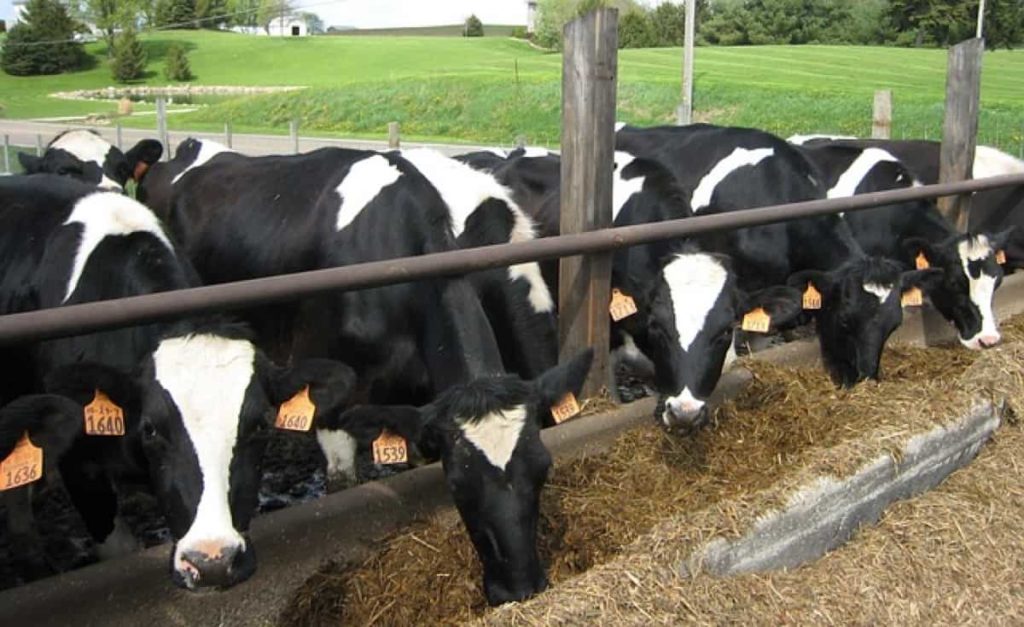
The Philippine government has given priority to the development of the dairy sector. According to the National Dairy Authority (NDA), the Philippines imports almost all of its dairy products, especially milk powder, as domestic production cannot meet the country’s dairy demand of approximately 3.0 million metric tons (MMT) of liquid milk equivalent (LME) per year.
In the Philippines, the dairy sector can be described as ‘rather small, fragmented and stagnant, with 1 to 2% of national milk consumption coming from local suppliers. This sector is also diverse and not well developed but there is a change in prices apart from short- and long-term fluctuations. Despite many difficulties, milk production is technically possible. Dairy has not yet been recognized as a major development sector and is facing an uphill battle by imitating developments in other countries.
The local Philippine government has become a partner for dairy farms, providing land, loans, and sponsorship. One important benefit that benefits dairy farms is linked to milk feeding programs. Local milk and cow farms provide dairy products to local schools, creating a strong bond around the dairy. Relationships between large and small farms also play a key role in dairy production. The law and the national development plan promote smallholder dairy, as contained in the following relevant provisions;
In case you miss this: Equipment Needed for Dairy Farming: Small Dairy Machinery Details
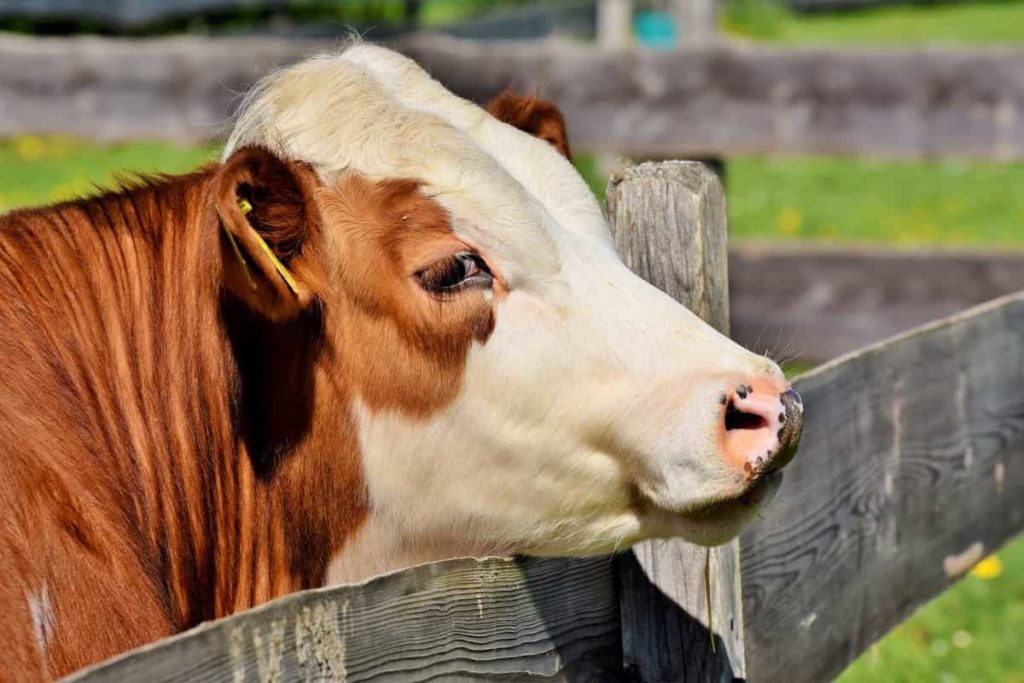
- To provide assistance and support in the production, processing, and marketing activities of all persons engaged in the business of milk and other dairy products through the provision of essential support systems, especially small dairy farmers living in rural areas;
- Recognize them as key agents in the development of the Philippine dairy industry, encouraging and promoting the active participation of farm families, rural cooperatives, and the private sector;
- Develop and disseminate dairy technology based on smallholders.
The Authority [NDA] will assist small milk producers and processors in organizing other forms of cooperatives or organizations to achieve the objectives of this Act, including;
- To facilitate collective arrangements. This will enable the cooperative to obtain dairy animals, veterinary, feeds, and other goods, materials, equipment, all kinds of services, and other dairy inputs under favorable conditions.
- Provide a forum for members of cooperatives to discuss common issues affecting the cooperative’s relationship with production, marketing, and authority;
- To help design the credit system that will provide loans, grants, and services that are needed, to properly-recognized organizations of dairy cooperatives and people;
- Help develop cooperative market channels and negotiate for milk production bulk outlets.
Housing management
Protect animals from excessive heat and rain, especially during milking time. Construct in an open space as a shed for cattle. A 12 ft x 12 ft fence is enough for 4 to 5 cows. An area of 10 feet x 3 feet will suffice as a shed for barn and feeding. The calves should be raised to a height of 2 feet, 4 feet x 8 feet in area. If you decide to milk twice a day, a 4 feet high section is needed to easily separate the calf from the mother.
If milking is done only in the morning, the calves should be provided with a separate wall in the open air. Take care of cleanliness in the area. The floor must be cemented and well-drained. Provide adequate food, water, and hay racks for the animals. Two compartments are needed to control the cows. In a dairy of four to five cows, three to four cows will be in the milking line.
In case you miss this: Dairy Farm Insurance in India, Companies, Policy, and Premium
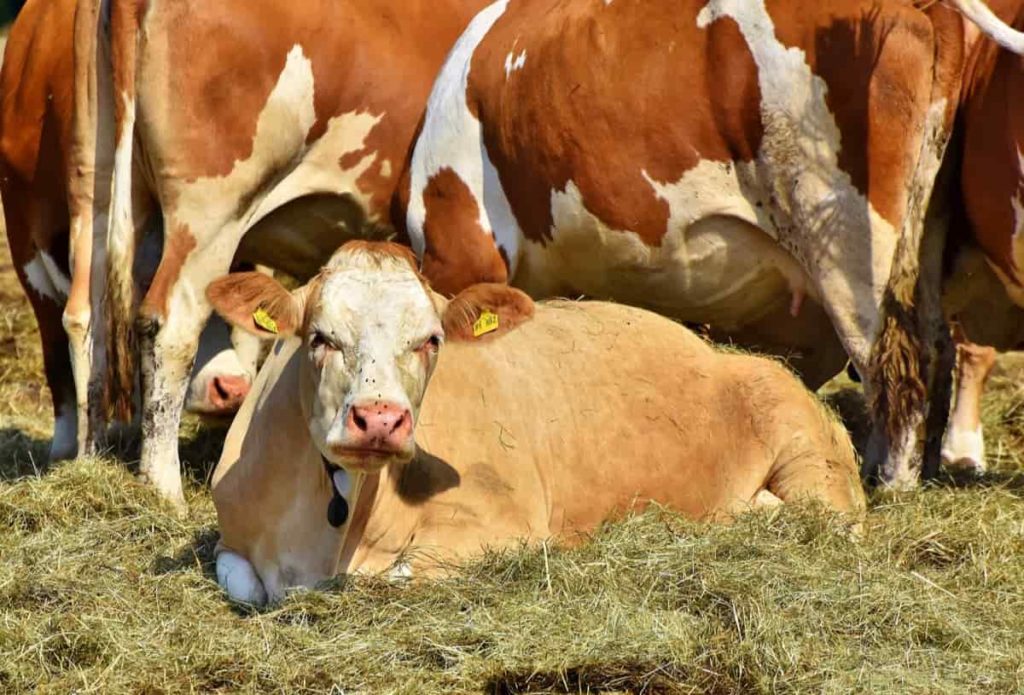
Important dairy breeds
The temperate breeds of dairy cattle that have been successfully raised in the Philippines are Holstein Friesian, Jersey, and Brown Swiss.
Holstein-Friesian produces an average of 22 kg of milk per day, with an average of 3.6% butterfat. These cattle are thought to have been selected for dairy farming for almost 2,000 years.
The Jersey Cow is the second largest breed of dairy cattle in the world. They produce milk with 18% more protein, 20% more calcium, and 25% more butter than any other breed. Jersey is known for its milk which is known for its high quality – it is especially rich in protein, minerals, and trace elements. Jerseys can adapt to a wide variety of climates, environments, and management practices.
Brown Swiss cattle can be gray, dark brown, tan, or almost white. Brown Swiss cows are good, permanent milk producers, producing an average buttermilk content compared to other breeds of dairy cattle. Tropical races such as Sahiwal, the Red Sindhi, and Tharparkar are more suited to the Philippine conditions. But these are dual-purpose breeds that are bred for both their meat and milk and produce less milk than the moderate breeds.
Some other breeds available in the Philippines are Murrah, Nili Ravi, Philippine Carabao.
In case you miss this: Dairy Disease Symptoms and Treatment for Cows, Cattle, Goats, and Sheep
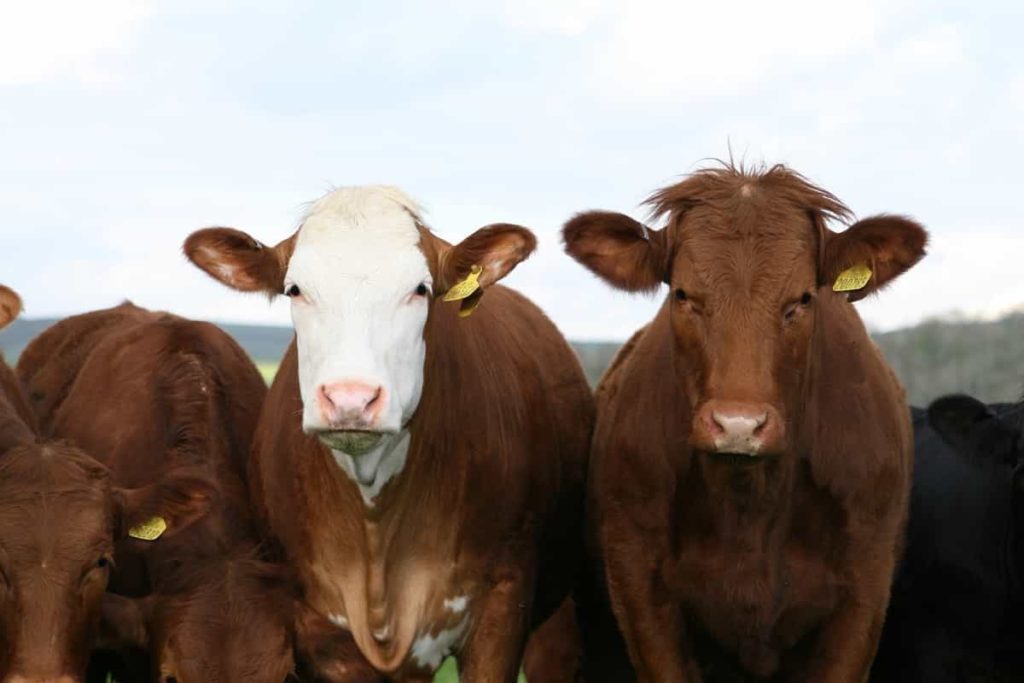
The main priority for the Philippine Department of Agriculture (DA) is making the development of the Philippine dairy industry, with special importance on improving the local fresh milk supply. Although the DA acknowledges that the Philippine powdered milk cannot compete in the milk market, it believes that it can greatly increase the fresh milk supply in the market.
The NDA (National Dairy Authority) is the DA’s primary agency that oversees and supports the Philippine dairy sector’s development. The NDA aims to accelerate dairy herd construction and milk production, increase the coverage of school feeding programs, expand the dairy business through the provision of technical services, and promote milk consumption.
The Philippine dairy industry consists of two separate sectors: a milk powder-based sector that imports, re-processes and repackages milk and dairy products. The other is the liquid milk sector, which includes imported UHT milk and locally produced fresh milk.
- Individual smallholder producers (who use and sell what they produce locally),
- Smallholder cooperatives (which deliver their milk to the collection point for transport to processing plants)
- Commercial farms (which provide processors)
- Government farms (which provide school and rural community feeding programs).
A significant amount of the Philippine fluid milk supply is Ultra High Temperature (UHT) milk reconstituted from imported milk powder because of the country’s limited production and cold chain challenges. The National Dairy Authority aims to accelerate dairy herd construction and milk production. The future of Philippine dairy production is bright with the help of local governments and quality assurance.
In major production systems with a favorable climate, differences should be made, such as in central Mindanao (Bukidnon), hotter but still wet coastal areas where fodder quality is inadequate for high-yielding cows, and in areas with prolonged dry climate conditions where feed protection is essential. One particular case is areas close to the market where buying city-centric feed is relatively easy and profitable (increased distance from the city indicates lower-cost production and higher prices for inputs such as feeds).
In case you miss this: Top 50 Dairy Farming Tips, Ideas, and Techniques
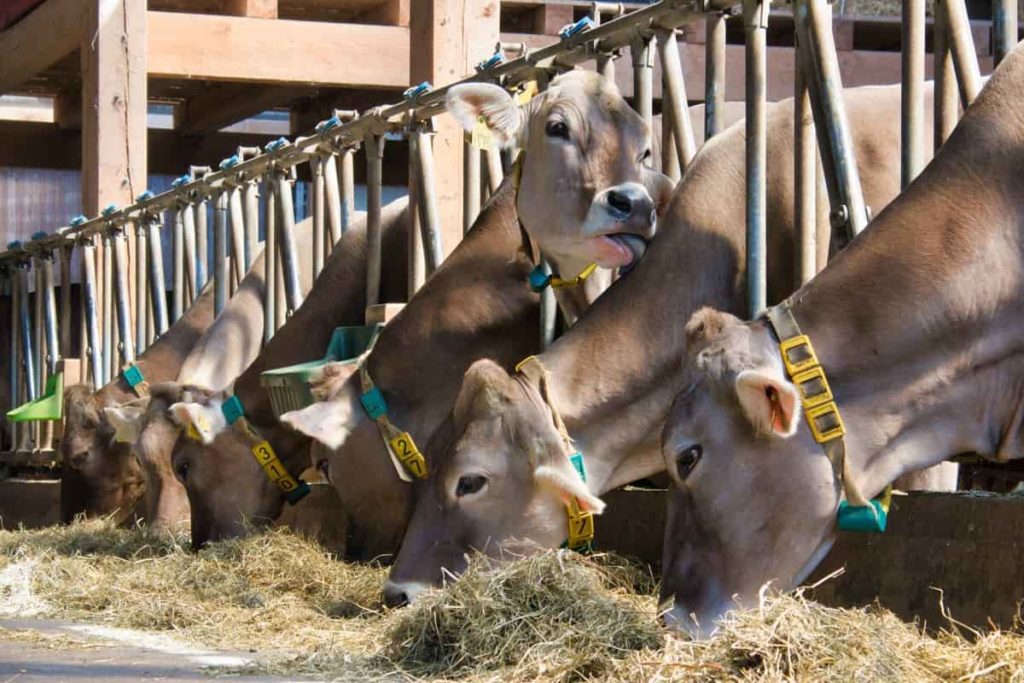
High-yielding dairy cows need food that meets the nutritional requirements for high milk production. Amino acids, carbohydrates, fatty acids, minerals, vitamins, and water are all nutrients that a lactating cow needs to meet the mammary gland’s demand for milk and milk products. The benefits of installing a feeding system include;
- Deciding whether the feeding system installation is the right solution for the farm and whether there are resources available to operate and maintain it. This is important before investing.
- Choosing the right system. There are many different feeding systems. Knowing how to choose the right one will maximize the return on investment.
- Feed a balanced ration for protein, energy, fiber, vitamins, and minerals.
- Group the cows based on the production and adjust the physical conditions accordingly during lactation.
- Provide exercise for dry cows
- Limit the silage of corn silage fed to dry cows at about 15 kg per day and about 5 kg of grass or its equivalent fodder.
- Maintain a 12–13-month interval to avoid prolonged dry periods by providing good health and nutrition measures and expert reproductive exercises.
In the Philippines, the dairy sector has recently been established and is not yet well developed. Most dairy producers are small-scale, with 5 to 10 cows per herd, working on farms that typically do not exceed three hectares. Production is assembled, processed, and redistributed through cooperatives. The major challenges facing the sector are poor mechanization, water scarcity, low production efficiency, low fodder production, and record shortages which will help track the evolution of dairy farm production.
In case you miss this: Dairy Goat Breeds, List, Milk Production, Breeding
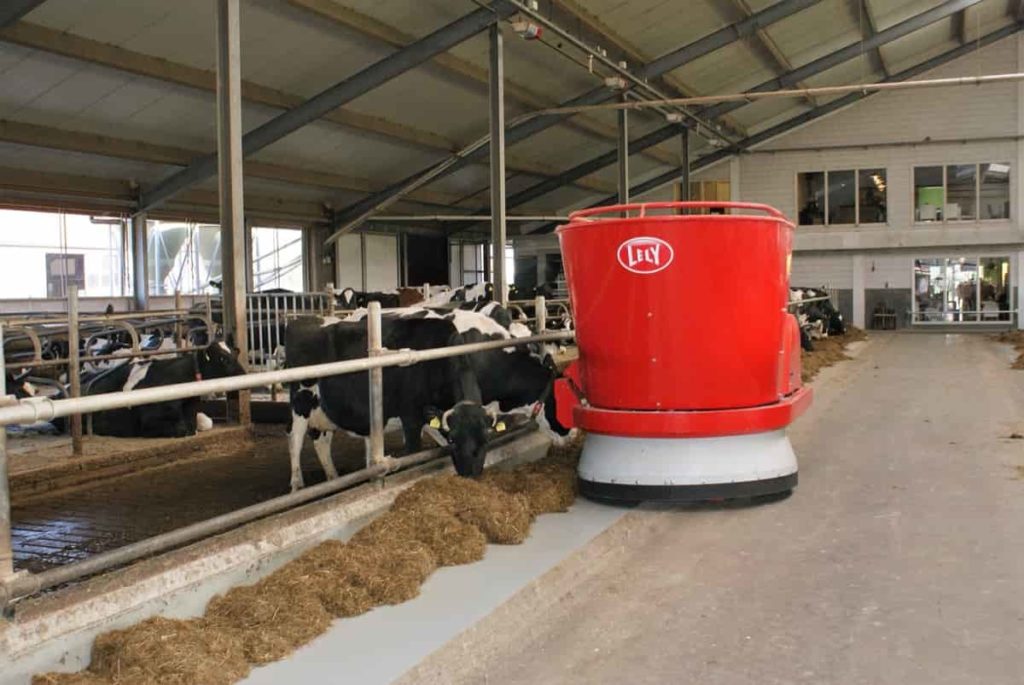
Therefore, only 1.8% of the gross domestic product can support domestic consumption and so the rest has to be imported. Provide cows with a good source of water for the most delicious food, a clean, dry, comfortable environment, and a balanced ratio to meet their production needs. It is important to consult and work with your local veterinarian, diagnostic laboratory, nutritionist, and extension personnel to avoid costly metabolic disorders.
Pollination Strategies for Maximum Pumpkin Yield
The complete guide to chicken fattening: strategies for maximum growth.
- Natural Solutions for Tulip Problems: 100% Effective Remedies for Leaf and Bulb-Related Issues
Revolutionizing Citrus Preservation: Towards a Healthier, Greener Future
- Natural Solutions for Peony Leaf and Flower Problems: 100% Effective Remedies
- Maximizing Profits with Avocado Contract Farming in India: A Comprehensive Guide
- Natural Solutions for Hydrangea Problems: 100% Effective Remedies for Leaf and Flowers
- The Ultimate Guide to Choosing the Perfect Foliage Friend: Bringing Life Indoors
- From Sunlight to Sustainability: 15 Ways to Use Solar Technology in Agriculture
- The Ultimate Guide to Dong Tao Chicken: Exploring from History to Raising
- The Eco-Friendly Makeover: How to Convert Your Unused Swimming Pool into a Fish Pond
- Mastering the Art of Delaware Chicken Farming: Essentials for Healthy Backyard Flocks
- 20 Best Homemade Fertilizers for Money Plant: DIY Recipes and Application Methods
How to Craft a Comprehensive Free-Range Chicken Farming Business Plan
- Brighten Your Flock: Raising Easter Egger Chickens for Beauty and Bounty
- How to Optimize Your Poultry Egg Farm Business Plan with These Strategies
- Subsidy for Spirulina Cultivation: How Indian Government Schemes Encouraging Spirulina Farmers
- Ultimate Guide to Raising Dominique Chickens: Breeding, Feeding, Egg-Production, and Care
- Mastering the Art of Raising Jersey Giant Chickens: Care, Feeding, and More
- Ultimate Guide to Raising Legbar Chickens: Breeding, Farming Practices, Diet, Egg-Production
- How to Raise Welsummer Chickens: A Comprehensive Guide for Beginners
- How to Protect Indoor Plants in Winter: A Comprehensive Guide
- Ultimate Guide to Grow Bag Gardening: Tips, Tricks, and Planting Ideas for Urban Gardeners
- Guide to Lotus Cultivation: How to Propagate, Plant, Grow, Care, Cost, and Profit
- Agriculture Drone Subsidy Scheme: Government Kisan Subsidy, License, and How to Apply Online
- Ultimate Guide to Raising Araucana Chickens: Breed Profile, Farming Economics, Diet, and Care
- Bringing Hydroponics to Classroom: Importance, Benefits of Learning for School Students
- Ultimate Guide to Raising Polish Chickens: Breed Profile, Farming Economics, Diet, and Care
- Ultimate Guide to Raising Australorp Chickens: Profile, Farming Economics, Egg Production, Diet, and Care
- Silkie Chicken Farming: Raising Practices, Varieties, Egg Production, Diet, and Care
- Sussex Chicken Farming: Raising Practices, Varieties, Egg Production, Diet and Care
- Homemade Feed Formulations for Livestock: Discover Cost-effective Starter to Finisher Feed Recipes
- 20 Best Pig Weight Gain Supplements: Top Swine Weight Gain Formulas
- Ultimate Guide to Elderberry Farming: Propagation, Planting, Yield, Cost, and Profit
- 100% Effective Strategies for Combating Pests and Diseases in Hibiscus: Prevent and Treat Successfully
- Management of Pests and Diseases in Mums: Ultimate Guide to Protecting Mums
LEAVE A REPLY Cancel reply
Save my name and email in this browser for the next time I comment.
Natural Solutions for Tulip Problems: 100% Effective Remedies for Leaf...
Natural solutions for peony leaf and flower problems: 100% effective..., maximizing profits with avocado contract farming in india: a comprehensive..., natural solutions for hydrangea problems: 100% effective remedies for leaf..., the ultimate guide to choosing the perfect foliage friend: bringing..., from sunlight to sustainability: 15 ways to use solar technology..., the ultimate guide to dong tao chicken: exploring from history..., the eco-friendly makeover: how to convert your unused swimming pool..., mastering the art of delaware chicken farming: essentials for healthy..., 20 best homemade fertilizers for money plant: diy recipes and..., brighten your flock: raising easter egger chickens for beauty and..., how to optimize your poultry egg farm business plan with..., subsidy for spirulina cultivation: how indian government schemes encouraging spirulina..., ultimate guide to raising dominique chickens: breeding, feeding, egg-production, and..., mastering the art of raising jersey giant chickens: care, feeding,..., ultimate guide to raising legbar chickens: breeding, farming practices, diet,..., borewell drilling cost, pump price, and pipe cost, polyhouse subsidy, cost, profit, project report, tractor subsidy, bank loan, eligibility, schemes, process, malabar neem project report details guide, cold storage project report, cost and subsidy, mushroom farming project report, cost and profit analysis.
22 Profitable Agribusinesses in the Philippines
- Posted by: First Standard
- Last Updated: December 2, 2021
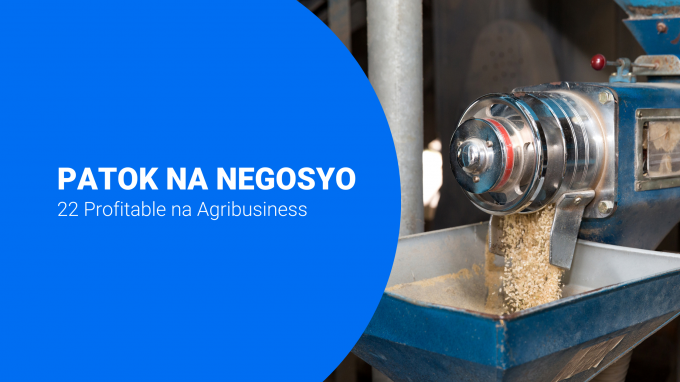
As the economy slowly opens up, we see a strong year for many agribusinesses in the Philippines this 2022.
Whether you have an established business or just starting, it pays to look at the trends to explore how you can improve productivity and increase profits.
Here are 22 profitable agricultural businesses this coming year (in no particular order):
FRUITS & VEGETABLES

With the pandemic, Filipino consumers are making healthier choices and are actively adding more fruits and vegetables into their diet. Demand for fresh produce is foreseen to increase in the next 10 years .
1. Sugarcane (Tubo) – Profits can be seen mostly from the by-product of sugarcane (confectionary, rum, ethanol, building materials, and fuel).
2. Bananas – Bananas are the top-grossing fruit produce as of Q3 of 2021. Projections are positive in the next several years. These crops are easy to maintain and the period from planting to harvesting is short.
3. Pineapple – The average net return of pineapple is P166,030 per hectare in 2019. Its estimated annual rise in profit is up to 3%.
4. Onions – Onion farms have always been profitable as a staple ingredient in Filipino cooking. The average Filipino consumes 1.9 kilos of onions each year.
5. Garlic – another Filipino cuisine staple with very minimal tending requirements. You can start harvesting within 40 days. Garlic had an average net return of P190,291 per hectare in 2019.
6. Organic Crop Farming – consumers are willing to pay more for safer and healthier fruits and vegetables. Consider adding door-to-door delivery to upsell your product.
7. Herbs and Spices – with more people cooking at home, herbs like sweet basil, coriander, dill, tarragon, and lemongrass were in high demand in 2021 and will continue in the coming years.
8. Coffee Beans – the climate in the Philippines makes growing the berries easy plus the growing coffee culture both in urban and rural places has increased the demand for coffee beans.
9. Root crops – particularly, potatoes (all varieties), yams (ube), and carrots achieved an all-time high in demand in 2020 and 2021. Root crops require minimal tending and turnaround time is only around 3 months.

10. Pineapple – The average net return of pineapple is P166,030 per hectare in 2019. Its estimated annual rise in profit is up to 3%.
11. String Beans – this includes all varieties of string beans. These low-maintenance crops can be harvested after 80 days. One can get as much as P260,000 net return per hectare.
12. Herbs and Spices – with more people cooking at home, herbs like sweet basil, coriander, dill, tarragon, and lemongrass were in high demand in 2021 and will continue in the coming years.
13. Hydroponic Farming / Urban Farming – no land, no problem. Hydroponic farms have been popping up in metropolitan cities since 2018. The trend will rise as more businesses shift to agriculture. Start with this article if you’re curious.

Livestock farming often requires bigger capital. However, it also means bigger returns in the process.
14. Hog Raising (Piggeries) – pork will continue to be a highly consumed meat in the country. One sow (female pig) costs around P20,000 – P30,000.
15. Poultry – The fast turnaround of chickens (45 days) makes this industry very lucrative.
16. Eggs – You can either be the supplier or a distributor. Eggs have always been profitable when your business is scaled.
17. Backyard Farming Cattle – T he average farmgate price of cattle for slaughter in backyard farms for July to September 2021 was estimated at P147.21 per kg. That’s a 15.1% increase from the previous year, according to the Philippine Statistics Office .
18. Dairy Farming – In 2020, Australia and the Philippines have launched a research initiative to maximize the potential of the Philippine dairy industry. You’ll notice more local dairy-based products on grocery shelves and online retail stores in the coming years.
19. Milkfish (Bangus) and Tilapia – You can start a small backyard fishery for around P100,000. This includes pond excavation, irrigation preparation, and your first batch of fingerlings.
AGRI SUPPLIES

There’s plenty of profits to be made in agribusiness supplies too! This type of business doesn’t require a lot of farming know-how. Your main concern will revolve around transport and supply logistics.
20. Livestock Feeds (Distributor) – chicken and hog feed are two of the most profitable options. Sign up as a distributor to move things a lot faster.
21. Farm Machinery Leasing – Go the B2B route and lease trucks, tractors, air seeders, cultivators, and lifters. The more machinery you have to rent out, the faster the returns for your initial investment.
22. Aquaculture Supplies – explore getting into the business of fish feed and fishery machineries like water pumps, nets, and traps.
OTHER NOTABLE AGRIBUSINESSES:
Landscaping/Ornamental Plants Supplies – be a tita to the plantita and sell pots, plant stands, fertilizers, plant food, insecticides, and other landscaping needs.
Packaging – Supply other farming businesses with rice sacks, food-grade packaging, styro boxes, and jam jars. This B2B business can even go beyond the bounds of agriculture if you so choose.
First Standard can help you start any agribusiness expansion in as fast as 5 days with flexible terms. Get in touch with us today to learn more.
Recommended Reads

Top 10 Profitable Businesses in the Philippines in 2024
New year, new business! Let’s welcome 2024 with a new source of revenue!

This is Why Saving Up is Not Enough
Most Filipinos believe that saving up is enough to become financially free and stable. It's not and here's why.

4 Reality Checkpoints in Growing Your Business
With so many “experts” saying how simple it is to grow a business, then there would be more Filipino entrepreneurs, right? While we highly encourage making your savings work for you...

SEC Reg. No. ASO93-04331 CA No. 954


Seaweed Farming in the Philippines: How to Grow and Propagate Seaweed

Farming Milkfish In The Philippines: How to Grow and Raise Bangus

Shrimp Farming in the Philippines: How to Grow Hipon

- Agriculture
Bio-Organic Fertilizer From Coir Dust and Animal Manure

The Secrets to Growing Delicious Tomatoes
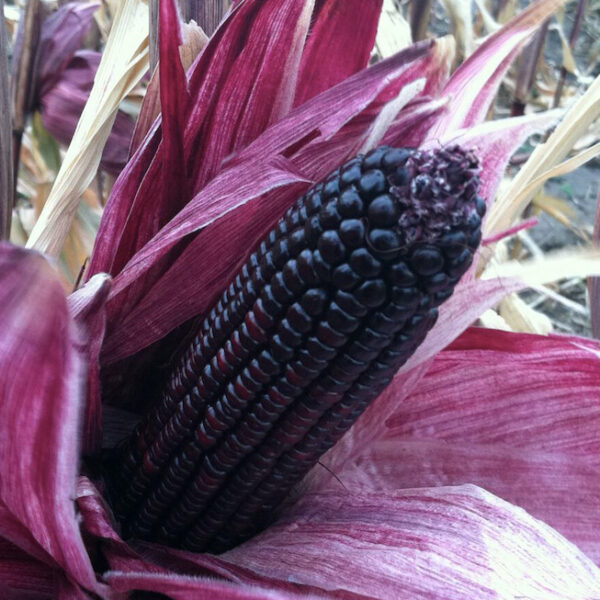
Why More Farmers Should Grow Morado Purple Corn
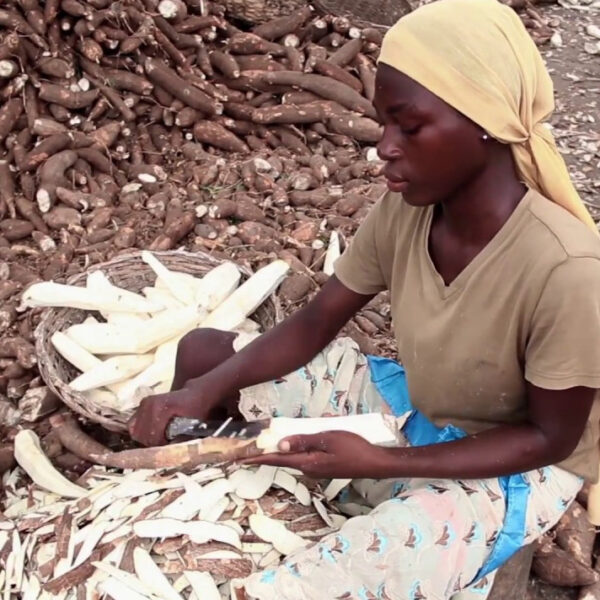
Maximizing Cassava’s Potential: A Sustainable Solution for Livestock Feed
Agroforestry.

Mangkono Tree Characteristics and Uses

Kamagong Wood Characteristics and Uses

Acacia Tree Description, Characteristics, and Uses

Amugis Tree Description, Characteristics, and Uses

Antipolo Tree Description, Characteristics, and Uses
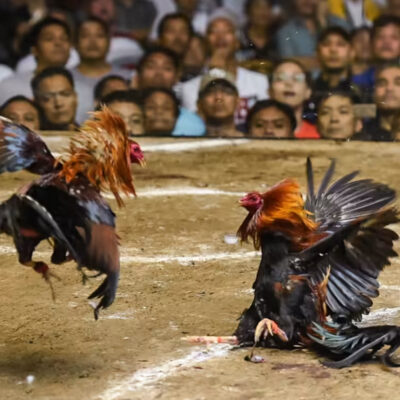
What is Sabong
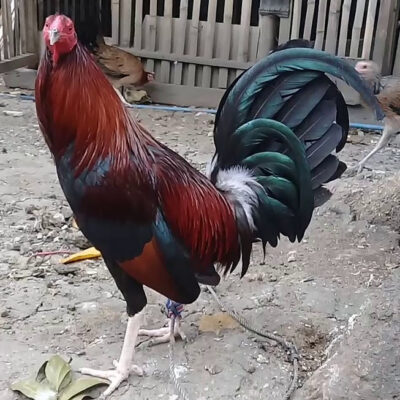
Fighting Cock: All You Need to Know About Fighting Rooster
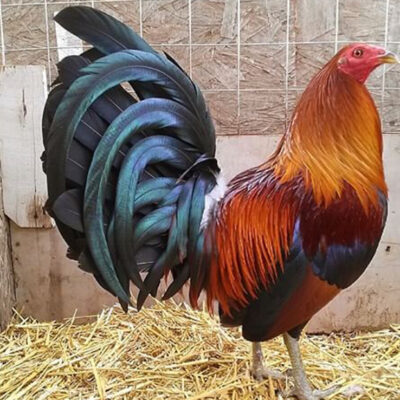
McLean Hatch Gamefowl Breed Profile and Fighting Style
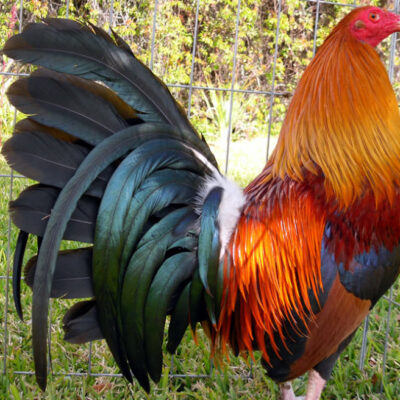
Kelso Gamefowl and its Fighting Style
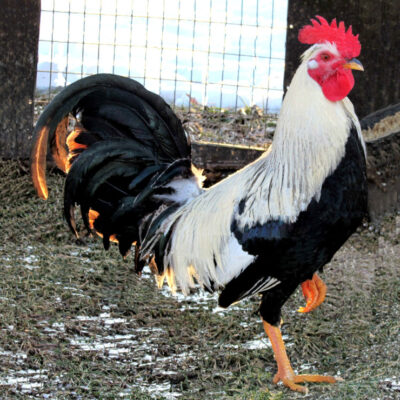
10 Best Fighting Rooster and Gamefowl Breeds
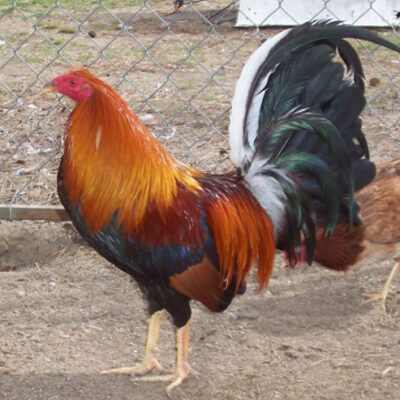
Sweater Gamefowl History and Its Fighting Style

DA Explores Seaweed as Affordable Livestock Feed

Crocodile Farming in the Philippines: How to Grow and Care for Crocodiles
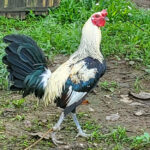
Richard Bates Grey Gamefowl History and Fighting Style
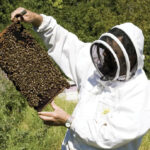
Analyzing the Income-Generating Potential of Beekeeping
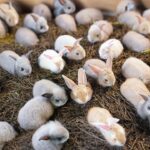
The Rabbitry Revolution: Gigi Morris’ Journey from Fine Dining to Farming in Batangas

Unlocking Sustainability: The Role of Stingless Bees in Apiculture

The Potential Profit of Rabbit Farming in the Philippines
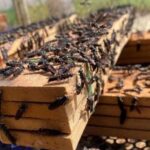
Black Soldier Fly Farming: A Buzzing Opportunity in the Philippines?
Food & health.
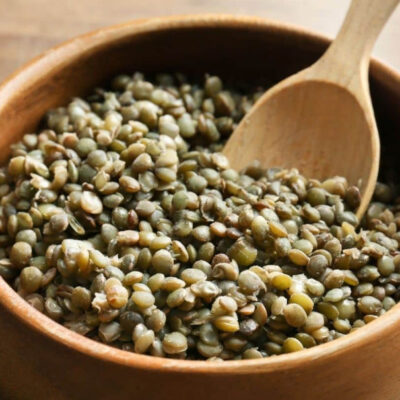
12 Health Benefits of Lentils, Description, and Side Effects
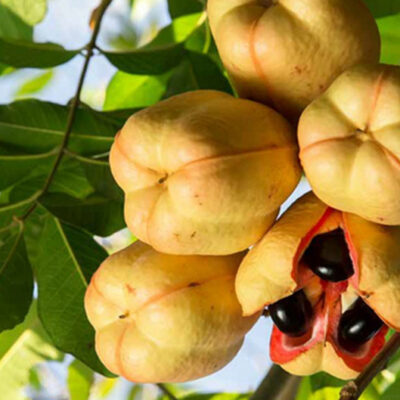
9 Health Benefits of Ackee Fruit, Description, and Side Effects

7 Health Benefits of Akebi Fruit, Description, and Side Effects
Aquaculture.

Koi Fish Farming: How to Grow Japanese Koi Fish

Eel Farming in the Philippines: How to Grow Igat
Medicinal plants.

Alagaw Tree Description, Uses, and Benefits

8 Health Benefits of Hemp Oil, Description, and Side Effects

Mansanilya: 11 Health Benefits of Chamomile, Description, and Side Effects
Product reviews.
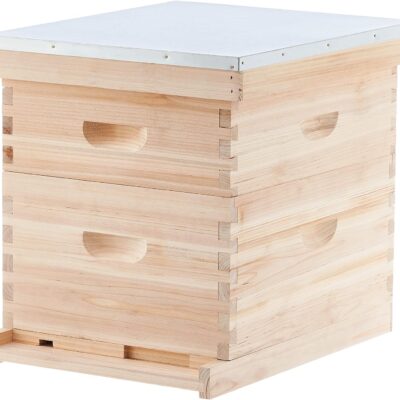
Wooden Beehive vs Plastic Beehive Pros and Cons
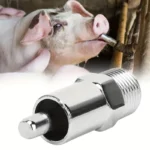
Hog Water Nipples: Types, Pros, Cons, and Alternatives

Honey Extractor Pros and Cons
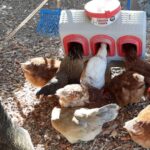
Can DIY Chicken Feeders Really Save You Money?
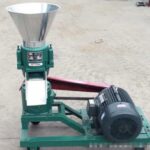
Why Every Animal Farmer Should Buy a Pelletizer Machine
News & opinion.
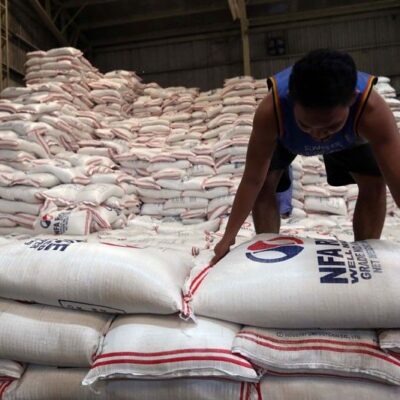
Why the Philippines Imports Rice: A Complex Mix of Geography, Demand, and Policy

DA Forms 39 Farm Clusters in Eastern Visayas to Boost Agricultural Production
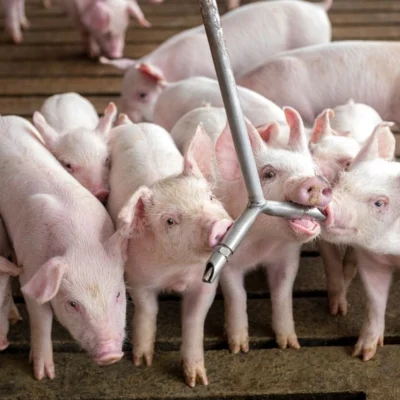
Antique Province Urged to Regulate Outbound Shipment of Pork Amid Soaring Prices


IMAGES
VIDEO
COMMENTS
Agri Business. Agri Insurance. Agriculture. Aquaculture. FAQs. Cattle Farming in the Philippines, Requirements, Business Plan, and Management, Breeds of Cattle in the Philippines, Cattle Management Practices and More.
The Upmetrics business plan software can help you create a comprehensive business plan for your cattle farming business. We have drafted a cattle farm business plan using our software to help you lay down what to aim for before creating your business plan. Get started with your creating a business plan that fits your requirements to the tee ...
the business of similar project : Vision (How do you see your business in five years) _____. Mission (What will you do to achieve that vision) _____. Project Description (Describe your business, its scope/scale, when will you start the project, and how are you going to start your business)
Develop A Cattle Farming Business Plan - The first step in starting a business is to create a detailed cattle farming business plan that outlines all aspects of the venture. This should include potential market size and target customers, the services or products you will offer, pricing strategies and a detailed financial forecast.
Cattle Farm Business Plan. Over the past 20+ years, we have helped over 500 entrepreneurs and business owners create business plans to start and grow their cattle farms. We have the experience, resources, and knowledge to help you create a great business plan. In this article, you will learn some background information on why business planning ...
To draw up a roadmap. A business plan for a cattle farm helps you define your objectives and set goals for the next 3-5 years, which can be incredibly useful for achieving success in the long run. The writing process of a business plan requires careful consideration of all aspects of running your cattle farm, from financial management to sales ...
Step 4: Deforest the Land. Cleared Farmland. Your next task is to clear the farmland of all trees, grasses, shrubs, and forests. You can utilize either a machine or human labor to do this task. The size of your farm will play a role in your decision, as manual labor is best suited for farms with a total area of 1 to 3 acres.
In conclusion, writing a business plan for cattle farming involves thorough research, careful planning, and strategic decision-making. By evaluating market demand, determining the scale of your operation, assessing financial feasibility, and understanding legal requirements, you can set yourself up for success.
Beef cattle do not require much maintenance, as just sheltering them is enough. 5. Decide the Purpose of Your Farm. Decide on the type of breed of cattle that you want to farm. The maintenance and budget differ for each breed, so plan accordingly. Most of the time, beginners start it with dairy products or beef.
Cattle fattening has gained prominence as an important business project of the livestock industry in the Philippines. It gives farmers year-round work and provides them with extra income. They can make use of cheap, plentiful farm byproducts—such as corn stovers, rice straw, copra meal, rice bran, and sugarcane tops—which ordinarily go to ...
Purchase and Setup the Software Needed to Run Your Cattle Farm. Open for Business. 1. Choose the Name for Your Cattle Farm. The first step to starting a cattle farm is to choose your business' name. This is a very important choice since your company name is your brand and will last for the lifetime of your business.
This article will outline how to start the cattle production business, and the beef cattle farming business plan - PDF, Word and Excel. Beef cattle farming is a lucrative business project that is providing income for a lot of livestock farmers. There are some important things you need to consider before you setup a beef cattle production ...
For an investment of around P18,000, the cattle can be sold at around P25,000 to P30,000 after a year if properly taken care of. That means for a P12,000 profit, he can get P6,000 per head as the caretaker (the other P6,000 for the owner). In 3 heads, he can get P18,000 as profit. That's a good return on investment compared to savings account ...
In the Philippines, between 75 and 90 percent of the total cattle production are raised in backyard systems. Small scale cattle production offers many benefits. Raising cattle on the farm helps to promote integration with crops, trees and soil and nutrient cycling is facilitated. Crop residues not suited for human consumption can be converted ...
YOU ARE HERE: Home / Downloads / E-Library / Business / B_DTI - PCAARRD Business Guide / Invest in Dairy Cattle Farming. Invest in Dairy Cattle Farming. Download Now! Share this: Click to share on Twitter (Opens in new window) ... 1200 Makati City, Philippines. Feedback. We would like to hear from you.
The business plan will be a comprehensive written form of the ideas you have in mind. It will contain necessary details like market, supply, demand, business' strengths and weaknesses, operations, management structure, price points, and more. Grants and loans. If your capital isn't enough for the scale you intend to reach, you can start ...
Backyard cattle fattening or on a large scale can be profitably undertaken. It consists of buying healthy stock, feeding and fattening them for 120 to 180 days, and selling them at anytime of the year. Minimum space for housing is required: 1.5 to 2 sq. meters per head for a sheltered feeding area, and 5 meters per head for a fenced loafing ...
By Zac B. Sarian. A novel investment scheme for a cow-calf operation designed especially for overseas Filipino workers (OFWs) is being offered by King Ranch, a successful beef cattle breeding and fattening operation in Batangas which is expanding to a 10,000-hectare farm in Palawan. King Carlos, who is managing the ranch together with his ...
Realization of objectives. You might realize the objectives you set out to achieve, making it necessary to change tactics if there's nothing more to achieve. Changes in cattle feed crops. You might want to shift from grass-based farming to rearing cows using field forage crops like corn for silage.
A 12 ft x 12 ft fence is enough for 4 to 5 cows. An area of 10 feet x 3 feet will suffice as a shed for barn and feeding. The calves should be raised to a height of 2 feet, 4 feet x 8 feet in area. If you decide to milk twice a day, a 4 feet high section is needed to easily separate the calf from the mother.
The start-up costs for dairy farming in the Philippines can vary depending on the size and scale of the operation. The primary costs include purchasing dairy cattle, building infrastructure, and purchasing equipment and supplies. On average, the start-up costs for a small-scale dairy farm can range from PHP 500,000 to PHP 2 million, while ...
These crops are easy to maintain and the period from planting to harvesting is short. 3. Pineapple - The average net return of pineapple isP166,030 per hectarein 2019. Its estimated annual rise in profit is up to 3%. 4. Onions- Onion farms have always been profitable as a staple ingredient in Filipino cooking.
Agraryo.com is your comprehensive online resource for all things agriculture and food production. With a mission to empower individuals, farmers, and enthusiasts alike with the knowledge they need to thrive in the world of farming and food cultivation, Agraryo.com offers a wealth of information on a wide range of topics.